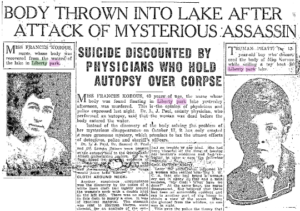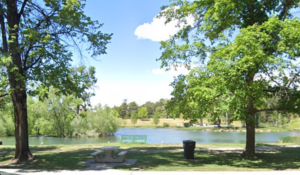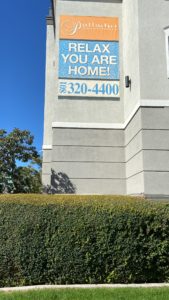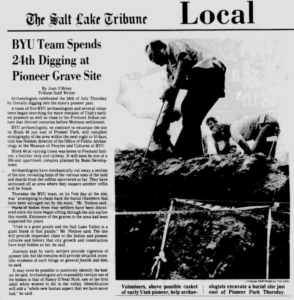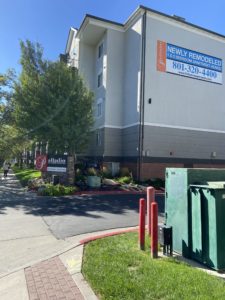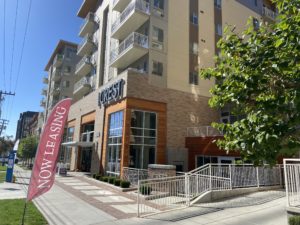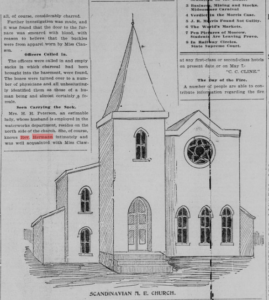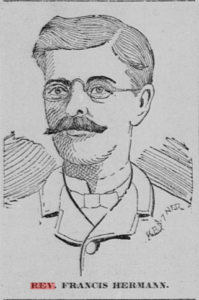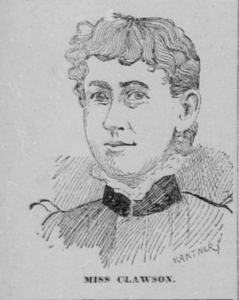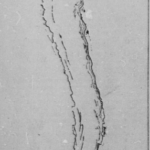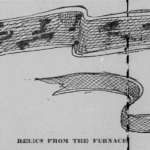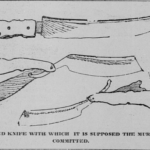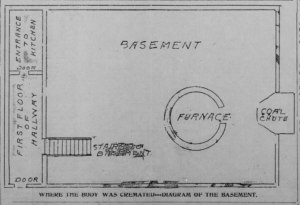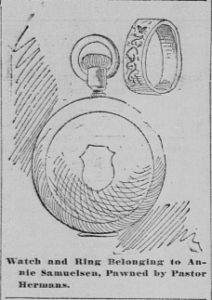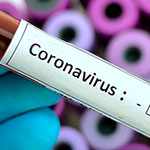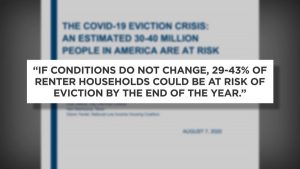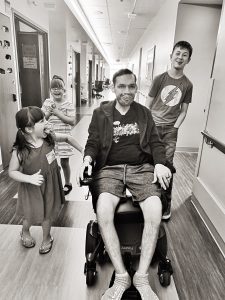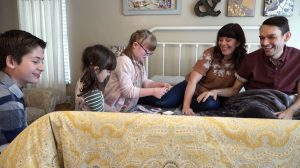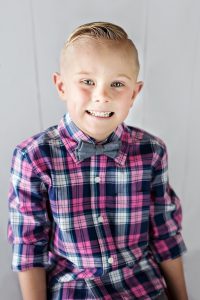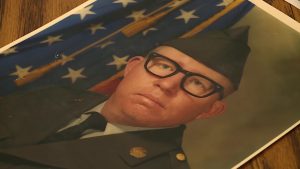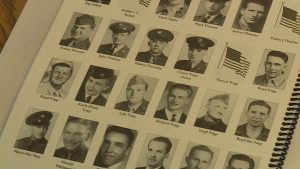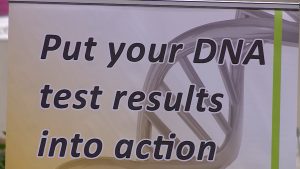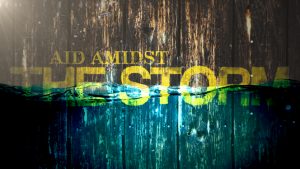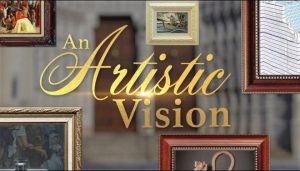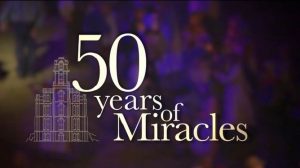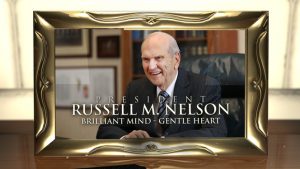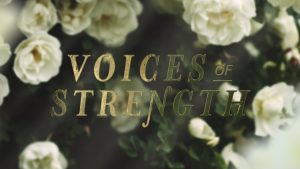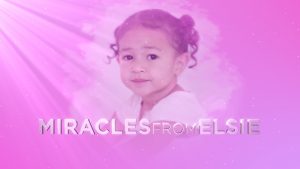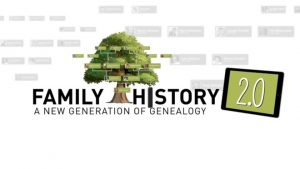![]() This General Conference documentary on family history is sponsored by EDGEhomes – Utah’s fastest-growing, most innovative, and solution-based home builder. Come see the EDGE difference! Visit one of our model homes today!
This General Conference documentary on family history is sponsored by EDGEhomes – Utah’s fastest-growing, most innovative, and solution-based home builder. Come see the EDGE difference! Visit one of our model homes today!
Advancements in Family History Research
Think genealogy is digging through old libraries and church basements? Think again. Family History research came a long way in the past few years. Today, you’re more likely to uncover hidden family mysteries using your smartphone. Additionally, DNA results are an amazing resource. And thanks to popular television programs like Relative Race, interest in family history is only growing.
KSL-TV’s Michelle King hosts the documentary “A New Generation of Genealogy”. She explores how modern technology makes your family research fun and memorable.
KSL’s General Conference Documentaries
You can watch more General Conference documentaries like this one with the KSL-TV app. The app is free, with no cable subscription required, and available for a variety of Connected TV and smartphone platforms including Amazon Fire, Roku, iOS, Android and fourth-generation Apple TV boxes.
Michigan researchers find 1914 shipwrecks in Lake Superior
CHICAGO (AP) — Michigan researchers have found the wreckage of two ships that disappeared into Lake Superior in 1914 and hope the discovery will lead them to a third that sank at the same time, killing nearly 30 people aboard the trio of lumber-shipping vessels.
The Great Lakes Shipwreck Historical Society announced the discoveries this month after confirming details with other researchers. Ric Mixter, a board member of the society and a maritime historian, called witnessing the discoveries “a career highlight.”
“It not only solved a chapter in the nation’s darkest day in lumber history, but also showcased a team of historians who have dedicated their lives towards making sure these stories aren’t forgotten,” Mixter said.
The vessels owned by the Edward Hines Lumber Company sank into the ice-cold lake on Nov. 18, 1914, when a storm swept through as they moved lumber from Baraga, Michigan, to Tonawanda, New York. The steamship C.F. Curtis was towing the schooner barges Selden E. Marvin and Annie M. Peterson; all 28 people aboard were killed.
The society’s team found the wreck of the Curtis during the summer of 2021 and the Marvin a year later within a few miles of the first discovery. The organization operates a museum in Whitefish Point and regularly runs searches for shipwrecks, aiming to tell “the lost history of all the Great Lakes” with a focus on Lake Superior, said Corey Adkins, the society’s content and communications director.
“One of the things that makes us proud when we discover these things is helping piece the puzzle together of what happened to these 28 people,” Adkins said. “It’s been 109 years, but maybe there are still some family members that want to know what happened. We’re able to start answering those questions.”
Both wrecks were discovered about 20 miles (32 kilometers) north of Grand Marais, Michigan, farther into the lake than the 1914 accounts suggested the ships sank, Adkins said. There was also damage to the Marvin’s bow and the Curtis’ stern, making researchers wonder whether a collision contributed, he said.
“Those are all questions we want to consider when we go back out this summer,” Adkins said.
Video footage from the Curtis wreckage showed the maintained hull of the steamship, its wheel, anchor, boiler and still shining gauges — all preserved by Lake Superior’s cold waters, along with other artifacts.
Another recording captured the team’s jubilant cheers as the words “Selden E. Marvin” on the hull came into clear view for the first time on a video feed shot by an underwater drone at the barge wreck site.
“We’re the first human eyes to see it since 1914, since World War I,” one team member mused.
DNA analysis of Beethoven’s hair reveals health issues, family secret
(CNN) — Before composer Ludwig van Beethoven died on March 27, 1827, it was his wish that his ailments be studied and shared so “as far as possible at least the world will be reconciled to me after my death.”
Now, researchers have taken steps to partially honor that request by analyzing Beethoven’s DNA from preserved locks of his hair and sequencing the composer’s genome for the first time.
A study detailing the findings published Wednesday in the journal Current Biology.
“Our primary goal was to shed light on Beethoven’s health problems, which famously include progressive hearing loss, beginning in his mid- to late-20s and eventually leading to him being functionally deaf by 1818,” said study coauthor Johannes Krause, a professor at the Max Planck Institute for Evolutionary Anthropology in Leipzig, Germany, in a statement.
The five hair samples helped scientists discover insights about family history, chronic health problems and what might have contributed to his death at the age of 56.
Beethoven’s maladies
In addition to hearing loss, the famed classical composer had recurring gastrointestinal complaints throughout his life, as well as severe liver disease.
Beethoven wrote a letter to his brothers in 1802 asking that his doctor, Johann Adam Schmidt, determine and share the nature of his “illness” once Beethoven died. The letter is known as the Heiligenstadt Testament.
But Beethoven outlived his favorite doctor by 18 years, and after the composer died, the testament was discovered in a hidden compartment in his writing desk. In the letter, Beethoven admitted how hopeless he felt as a music composer struggling with hearing loss, but his work kept him from taking his own life. He said he didn’t want to leave ”before I had produced all the works that I felt the urge to compose.”
Since his death, questions have swirled around what ailed Beethoven and his true cause of death. Within the last seven years of his life, the composer experienced at least two attacks of jaundice, which is associated with liver disease, leading to the general belief that he died from cirrhosis.
Medical biographers have since combed through Beethoven’s letters and diaries, as well as his autopsy, notes from his physicians, and even notes taken when his body was exhumed twice in 1863 and 1888, with the hopes of piecing together his complicated medical history.
But the researchers behind the new study took things a step further about eight years ago when they set out to do a genetic analysis of Beethoven’s hair. The samples they used included hair cut from his head in the seven years prior to his death.
Genetic revelations
The team started by analyzing a total of eight hair samples from public and private collections across the UK, Europe and the US. During their authentication work, they discovered that two didn’t come from Beethoven at all, while another was too damaged to analyze.
Previous work suggesting that Beethoven had lead poisoning was determined to be based on a hair sample that didn’t belong to him — one that instead had belonged to a woman.
But five of the samples all came from the same European male and matched his German ancestry. Beethoven had hand delivered one of the locks himself to the pianist Anton Halm in April 1826, saying “Das sind meine Haare!” (“That is my hair!”)
The genetic analysis spotted clues hiding in the composer’s DNA that could add context to his health issues.
“We were unable to find a definitive cause for Beethoven’s deafness or gastrointestinal problems,” Krause said.
“However, we did discover a number of significant genetic risk factors for liver disease,” he added. “We also found evidence of an infection with hepatitis B virus in at latest the months before the composer’s final illness. Those likely contributed to his death.”
Beethoven’s genetic data also helped the researchers rule out other potential causes of his ailments, such as celiac disease, an autoimmune condition, lactose intolerance or irritable bowel syndrome.
Letters written by Beethoven, as well as those of his friends, show that the composer regularly consumed alcohol. Although it’s difficult to tell how much he drank, a close friend wrote that Beethoven had at least a liter of wine with lunch each day.
Drinking alcohol, combined with genetic risk factors for liver disease and his hepatitis B infection, might have been the perfect storm for Beethoven’s health near the end of his life.
“If his alcohol consumption was sufficiently heavy over a long enough period of time, the interaction with his genetic risk factors presents one possible explanation for his cirrhosis,” said lead study author Tristan Begg, Ph.D. student at the University of Cambridge.
But the researchers cautioned that the timing of all of these events was critical to understanding what contributed to Beethoven’s death. Future research could reveal more insights — including the reason behind his hearing loss, the authors said.
“We hope that by making Beethoven’s genome publicly available for researchers, and perhaps adding further authenticated locks to the initial chronological series, remaining questions about his health and genealogy can someday be answered,” Begg said.
A secret in the DNA
Once the research team established Beethoven’s genetic profile, they compared it with the DNA of his living relatives in Belgium. But in a twist, they weren’t able to determine a complete match.
While some of the relatives shared a paternal ancestor through Beethoven’s family in the late 1500s and early 1600s, there was no match for the Y-chromosome in Beethoven’s hair samples.
This suggests that somewhere in the family’s history, there was an extramarital affair on Beethoven’s father’s side that resulted in a child.
“Through the combination of DNA data and archival documents, we were able to observe a discrepancy between Ludwig van Beethoven’s legal and biological genealogy,” said study coauthor Maarten Larmuseau, a genetic genealogist at the KU Leuven in Belgium.
The researchers think the affair occurred sometime between the 1572 conception of Hendrik van Beethoven, an ancestor in the paternal Beethoven line seven generations removed from the composer, and the conception of Beethoven in 1770.
The-CNN-Wire™ & © 2023 Cable News Network, Inc., a Warner Bros. Discovery Company. All rights reserved.
Chilling search history on Enoch father’s phone: ‘Can neighbors hear gunshots?’
ENOCH, Iron County — As police continue to piece together how the tragic murders of an Enoch family unfolded, newly released information continues to suggest that the killings were premeditated.
The bodies were discovered by the Haights’ neighbors who entered the home on Jan. 4 to conduct a welfare check. Upon discovery of the bodies, police were called.
Tausha Haight, 40; Haight’s mother, Gail Earl, 78; and Haight’s children — Macie Lynn, 17; Briley Ann, 12; Sienna Belle, 7; Ammon, 7; and Gavin Drew, 4 — were found shot to death by the children’s father and Haight’s husband, 42-year-old Michael Orwin Haight, who then took his own life, inside their home at 4923 N. Albert Drive.
One of the search warrants served by investigators on the house was to collect all the electronic devices. An iPhone was found on Macie’s bedside table, a second iPhone “on a luggage pile a couple feet from her bed,” and five phones, tablets and iPads found in the master bathroom attached to the master bedroom where the bodies of two adults and a child were discovered.
An iPhone was also located next to Michael Haight’s body. Those electronic devices were sent to the Utah Tech Digital Forensics Lab for analysis.
According to a newly unsealed search warrant affidavit, police researching Michael Haight’s Google search history on his phone found searches that included:
- “How loud is a 9mm?”
- “How loud is a 40mm?”
- “Can you hear a gunshot in a house?”
- “Can neighbors hear gunshots?”
There were also additional searches related to those. These searches took place on Dec. 30, 2022, between 10 a.m. and 12 p.m., and five days prior to the murders-suicide, the warrant states.
Previously, it was reported by Tausha Haight’s relatives that in the days leading up to the killings, Michael Haight had all the guns from the home removed.
The night before the bodies were discovered, on Jan. 3, Tausha Haight and one of her daughters were seen at a church function, according to the Enoch city administrators. A prior search warrant also disclosed that one of the Haights’ daughters sent a text message to a friend that night, “stating her dad came home, was acting strange, and she was worried.”
About the same time Enoch police were called to make a welfare check on the Haight residence, Cedar City police took a missing persons report involving Michael Haight. His Ford F-150 was found parked at his parents’ residence in Cedar City.
According to the search warrant unsealed Tuesday, police went to Michael Haight’s office in Cedar City, where he worked as an insurance agent, on Jan. 5.
“There were typed out journal entries on Michael Haight’s desk, along with the family trust portfolio, and printouts of an article ‘How to cope with petty people,'” the warrant states.
A receptionist told police that “Michael was in his office that day up until approximately 2 p.m. when he allowed her to leave early for the day,” according to the affidavit, presumably referring to Jan. 3.
The new warrant seeks the seizure of Haight’s office computer and any electronic storage devices at his office.
Although a possible motive for the killings has not been announced, Tausha Haight filed for divorce on Dec. 21. In 2020, Enoch police investigated reports of possible physical and emotional abuse by Michael Haight against his eldest daughter, but criminal charges were never filed as Tausha Haight told police she hoped her husband was on the road to change and that criminal charges wouldn’t be appropriate at that time.
Holocaust survivor left on a bench as a baby finds new family at 80
(CNN) — When Alice Grusová was a baby, her parents left her on a train station bench, with no idea of what would become of her.
It was June 1942 and this was the last desperate act by Marta and Alexandr Knapp to save their daughter as their attempt to escape what was then Czechoslovakia ended in disaster.
The couple had fled Prague, but when their train drew in to Pardubice, eastern Bohemia, Nazi soldiers boarded in search of fleeing Jews.
Grusová — her married name — never saw her parents again. They were arrested and sent to Theresienstadt concentration camp, from where they were later deported to Auschwitz and murdered. Her brother from her father’s previous marriage was also killed there.
It might have been their infant daughter’s fate too, had it not been for their high-stakes gamble. This year, Grusová celebrated her 81st birthday — as well as her 60th wedding anniversary with husband Miroslav. Living in Prague, they have three sons, six grandchildren and three great-grandchildren.
This, she had always felt, was the sum total of her family, but earlier this year the retired pediatric nurse traveled to Israel where she reconnected with her Jewish heritage and met her only surviving first cousin — as well as a wider family she didn’t know existed.
“I was most shocked when I found out, when I was 80, that I have such a large family,” she said in an emotional video call with CNN.
“I am just sad this didn’t come earlier,” added Grusová, who has battled cancer, hepatitis and a spinal surgery.
The reunion occurred thanks to the efforts of a curious woman 5,000 miles away in South Africa, during the initial stages of the pandemic. The incredible story has now been shared by online genealogy site MyHeritage.
With so much of life on hold, Michalya Schonwald Moss delved into her family history on MyHeritage. She had always known her family had been decimated in the Holocaust, but nothing prepared her for the discovery that 120 of her relatives were murdered at Auschwitz.
Yet out of the unimaginable darkness, a tiny and most unexpected ray of hope emerged. With the help of professional genealogists in both Slovakia and Israel, she unearthed the incredible tale of one survivor: Grusová.
Having been found on the station bench, the one-year-old girl was initially placed in an orphanage. Grusová, who has no memory of her parents, was later moved to Theresienstadt. She recalled: “There was a nice woman who was taking care of us. I only remember glimpses from that time.
“And then I remember when I got sick with typhoid and the workers there had to protect me from the Germans.”
“I remember they were telling me to be silent or the bad Germans would come and kill us.”
Incredibly, she survived and after the war was reunited with her mother’s younger sister Edith — or Editka as she calls her — who survived Auschwitz by being transferred to a labor camp.
Her voice cracking with emotion, Grusová recalled her aunt, who like many Nazi camp survivors had her identity number tattooed on her arm. She said: “She was so beautiful, she was slim, she had the tattoo. But I didn’t understand that at the time.”
At first, the pair lived together in Czechoslovakia, but in 1947 her aunt emigrated to what was then Palestine. For reasons that remain unclear, Grusová was left behind and put up for adoption.
“I was six when my aunt left Czechoslovakia and I came to my new parents,” she said. “As a child, I was very sad that my aunt left. I didn’t understand why she didn’t take me with her.
“I was in contact with her for a while. She got married and had a son, whom I last saw in a picture when he was two years old.” But the correspondence with Edith petered out, and in 1966 “we lost each other,” she said.
Grusová never knew what happened to her aunt — until her son Jan, who speaks English, translated a surprising email his parents received from Schonwald Moss in 2021. He and his wife had spent years trying to trace his mother’s cousin, without success.
But with the help of professional researchers, Schonwald Moss had not only uncovered Grusová’s incredible tale but had also found that cousin — Edith’s son, Yossi Weiss, now 67 and living in the Israeli city of Haifa.
Weiss and Grusová “met” online last year, alongside other members of the newly discovered family tree. Weiss had known nothing of his cousin and his own life had been blighted by tragedy — having lost both his mother and his son to suicide.
Over the summer, Grusová flew to Israel with her husband, their son Jan and his wife Petra to meet Weiss and members of his wider family, including Schonwald Moss, who had traveled from South Africa for the occasion.
Grusová told CNN: “They wanted to meet me and come to visit me, but my cousin has cancer and he can’t travel.
“I was scared of the long journey at my age,” she said. “Now I am so pleased I went. I am just sad this didn’t come earlier.
“If it wasn’t for Covid, I would have never found out I have such a big family.”
Grusová — who speaks neither Hebrew nor English — communicated with her new-found relatives via an interpreter. Together they visited her late aunt’s grave, the Theresienstadt museum and the World Holocaust Remembrance Center at Yad Vashem, where she recorded her personal testimony and was also filmed for an Israeli news channel.
Simmy Allen, head of international media at Yad Vashem, was there at the time. He told CNN that it was a “very emotional gathering,” adding: “The idea that the family was uniting and different sides of the family were really discovering their roots and coming to Yad Vashem to solidify that, so that their ancestors have a place that will remember them in perpetuity.”
Grusová said: “My family increased in size a lot. And Michalya keeps finding more and more relatives.”
Weiss told CNN he had known little about his mother’s earlier life and was unable to explain why she left his cousin behind when she moved to what was then Palestine.
“From the little bit she told me I knew she worked in a factory and she came back to the city after the war and she was lucky to survive,” he said. “I knew she was married before and her husband was killed on the Russian front but I didn’t know the chapter of finding Alice.”
Of their reunion, he said: “I made sure I had private time with Alice.
“We opened up the issue of my mother coming to Israel and Alice staying behind and agreed that things were complicated.”
The question will forever remain unanswered, though Weiss has tried to make sense of it. “My mother was a Holocaust survivor coming back from the camps at the age of 25 and had just lost her husband. Alice was five. My mother couldn’t provide her home, school, food and everything,” he said.
Perhaps she thought her niece would have been better off with adoptive parents, he added.
“It hurts me on a personal level because sometimes I fantasize about ‘what if,'” he said.
Grusová felt similarly: “Of course I thought about what my life would have been. As a child, I was very sad that my aunt left. I didn’t understand why she didn’t take me with her.”
“My cousin tried to explain,” she added. “She was young, her life was saved by a miracle. I am not blaming her for anything.”
Of the reunion with Grusová, Weiss said: “She wanted very much to see my mother’s grave. It was very important to her and part of the closure.”
Being at Yad Vashem with Grusová when she recorded her testimony was particularly poignant, he said. “It was very emotional and not easy for anyone.”
Schonwald Moss agreed. “It was one of the most extraordinary, intimate, emotionally healing experiences of my life,” she told CNN.
The family is now in talks with Steven Spielberg’s USC Shoah Foundation, which plans to record Alice’s video testimony in the new year.
“To discover that one family member had survived that we never knew about, and that she was still alive and living in Prague, was as if we had found a living ghost. And then to discover her story was especially heartbreaking,” said Schonwald Moss.
“By having her anew in our lives, she’s taught us what living looks like. Everyday is a repair for our family. And thanks to Alice and the sparkle in her eyes and the love she emanates, we have become a family again.”
Roi Mandel, MyHeritage’s director of research, welcomed the outcome for Grusová and her family. “Alice’s story is the story of many who survived the war and assumed they were left alone in the world, not knowing that there was another branch that survived,” he said.
“Decades of disconnection as a result of the Iron Curtain that was raised over Eastern Europe, have come to an end thanks to the technology that makes it possible to connect pieces of a puzzle that it seemed would never come together.”
Clarification: An earlier version of this article incorrectly stated that Schonwald Moss worked with a Czech genealogist. The genealogist is based in Slovakia.
The-CNN-Wire™ & © 2022 Cable News Network, Inc., a Warner Bros. Discovery Company. All rights reserved.
Three Salt Lake places that should be haunted based on their spooky history
SALT LAKE CITY — Forgotten graveyards, a reverend serial killer, and a Halloween mask in a lake — here are three places in Salt Lake that have particularly spooky histories. Two apartments and a local park have chilling pasts that may continue to haunt the premises.
You decide.
Rachel Quist, an archaeologist, and Fiona Robinson Hill, a historian, talked with me about some unique and lesser-known spooky histories.
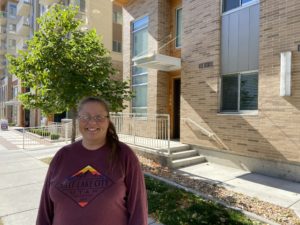
Rachel Quist, an archaeologist, shown in front of the Liberty Crest Apartments in Salt Lake City, the former location of the Scandinavian Methodist Episcopal Church.
Quist studies the history of Salt Lake extensively and has an Instagram and blog where she shares her latest findings. Robinson Hill works as a historian and enjoys leading Grimm Ghost Tours around Salt Lake City.
Liberty Park
A murder has haunted the lake at Liberty Park since 1920. The mystery surrounding 40-year-old Frances “Frae” Korous, who was believed to be murdered and then dumped in the lake, has never been solved.
A few days after Halloween, 13-year-old Truman Pratt was sailing his toy boat at the southern end of Liberty Park Lake when he saw what he believed to be a Halloween mask floating in the water about 15 feet from the shore.
Pratt fashioned a wire on a stick, and used it to pull the mask towards the shore, but once pulled closer, he realized it was attached to the body of a woman.
The Salt Lake Telegram published an interview in 1920 with Pratt who stated:
“The hook caught in what I thought was a mask, and I started to pull it ashore. It was unusually heavy, I thought, for a mask, so I was careful not to break my hold on it. When I got the object close to the shore and saw it was a body I gave a scream…”
Horrified, he ran to tell Park Superintendent, Sidney R. Lambourne, who contacted Salt Lake City Police.
The body was identified as, “Miss Frances Korous,” and was found with a white cloth tied tightly around her neck.
A native of Iowa, Korous had worked as a nurse in WWI and moved to Salt Lake City after she was discharged from the US Navy, joining her brother, Yaro, and her sister Rose. She lived at the city’s YWCA at 306 E. 300 South until she found a more permanent apartment.
The last time she was seen was the night of Sunday, Oct. 17, 1920.
That evening she attended the Methodist church and then went to visit her brother Yaro and his family for Sunday dinner. At the end of the evening, her brother escorted her to a streetcar to take back to the YWCA for the night.
Korous never made it back to YWCA and was never heard from again.
As relatives became concerned, search parties, organized by police, were organized to find her and Boy Scouts even searched in nearby canyons for the missing nurse.
Her body was recovered on Nov. 6, 1920, in Liberty Park.
When her body was found, it was discovered in the same clothing she was wearing when she disappeared with all her jewelry intact, and a watch that had stopped at 2:34.
The family of Korous denied any possibility of suicide and the coroner determined that her lungs were not full of water, and neither was her stomach, ruling that she had been killed before she was dumped in the lake.
Previously it had been believed that maybe she had been hit by a car and dragged away, but the tightly knotted rag around her neck and suspicious location of her body pointed to murder.
“The park keeper said that he had been all around the lake several times during the past few weeks. The police say that a body usually rises to the surface within at least ten days after it has entered the water.” However, Korous’ body didn’t rise to the surface until it was found by Pratt, three weeks after her disappearance.
Korous’ murder was never solved, though the lake she was found in (now more of a pond,) still exists in Liberty Park. To our knowledge, no Halloween masks have been recently spotted in the water.
The Palladio Apartments
The Palladio Apartments were built on a former cemetery for Mormon pioneers and an indigenous burial ground. It is likely, because of the rush to finish excavation and continue construction on the apartment buildings, that some remains continue to lie beneath the apartment building. And if you’re thinking, ‘isn’t that the whole premise of the movie “Poltergeist”?’ You would be right.
The remains were discovered when construction was beginning on a set of apartments that were built before the currently standing Palladio Apartments.
Construction workers were pouring the foundation for a building and found the remains, but the project was never finished as the company declared bankruptcy, the foundation was then reconfigured for the Palladio Apartments.
“I think at the time there was an idea that there was a cemetery somewhere in the area because you know you have the story of the first child dying, and that’s well before the city cemetery’s established,” Quist said.
She said there was an official archaeology report written about what they found and how they found it; newspapers at the time also covered the discovery.
However, less mentioned at the time was the presence of human remains and artifacts from Native American burials too.
“While they were digging their Mormon burials, they probably, absolutely came into contact with all sorts of artifacts. That’s the case out in Grantsville, that’s the case at Brigham City, Willard, basically everywhere that the Mormons settled they were already settling on a village site,” Quist said.
Construction was halted when formal grave sites were found. Typically, when a body is found during construction, everything is stopped and local authorities are contacted.
“The process now is you contact local law enforcement, generally the police, they then evaluate which path it goes down.”
If the remains are more recent, police begin an investigation into the identity and cause of death. If the remains are historic, archaeologists are called to look into it.
“They’ve encountered human remains with their back hoes there in the back dirt, they’ve already found the Native American remains and either didn’t notice, or didn’t care,” Quist said. “But once they found Mormon Pioneer graves in wood coffins all of a sudden, ‘We’ve got something here, we’ve got to call the authorities.’ ”
Quist explained the pioneer grave sites were obvious with coffins all facing the same direction.
“This was an established, laid out, pioneer cemetery. So everybody’s buried in roughly the same direction, in very rough lines or rows, in [coffins of] milled lumber with wood and metal hardware. So you know for sure, it’s definitely going to be the Mormon pioneer era, because pre-historic burials are different.”
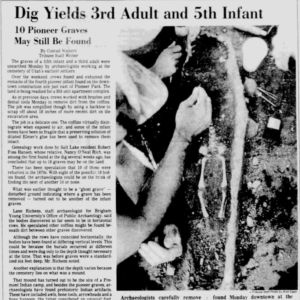
The Salt Lake Tribune reports on new remains discovered in the pioneer cemetery. (Utah Digital Newspapers)
Since the graves were identified as Mormon pioneers, they were given to the Church of Jesus Christ of Latter-day Saints, who arranged to have all the pioneer remains removed and reburied at This is the Place State Park.
According to the This is the Place website:
“The building project paused for quite some time while archaeologists from Brigham Young University’s Public Office of Archaeology undertook an excavation of the cemetery. The remains of those buried were sent to the University of Wyoming for testing and research, and upon their return the bones of 32 bodies were laid in separate coffins. The remains were relocated to This Is the Place Heritage Park on Memorial Day, 1987.
“Research indicates that the very first pioneers who died in the valley were buried in the cemetery unearthed by the construction crew.”
The indigenous remains pre-date the pioneer remains by almost 1,000 years. Three bodies of Native Americans were found, prepared for burials, and two pit houses were discovered dating back to the ancient Fremont Indians.
“The Piute and Goshute are hunter-gatherers, mobile groups,” Quist said. “The Ute were early adopters of the horse so they are all over the place. But [this is] before that time period, so we’re talking roughly, about 2,000 years ago, it’s called the Fremont Era. There was an established village settlement in Salt Lake.”
The indigenous remains were given back to tribes.
“Native American remains take a different path and in this case they were repatriated to a local tribe. I don’t know which tribe though because that was not in the report,” Quist said. “That’s the correct and legal thing to do. They’re repatriated to the tribe, sometimes it’s a group of tribes and they collectively determine amongst themselves what will then happen. And we are not privy to that information.”
The return of indigenous remains is done in a formal process with respect with as much publicity or as little publicity as the tribes desire. In this case, little information is known about what happened to the indigenous remains other than three bodies found were returned to the tribes.
So you might be thinking, “OK bodies were found there, but then relocated, what’s the big deal?”
Well here’s where it gets “Poltergeist” movie-style creepy. Archaeologists had very limited time to complete the excavation.
“They had three weeks to do the excavation which is not very long especially when they’re dealing with human remains, especially child human remains,” Quist said.
I asked Quist what the chances were of remains being left behind.
“Oh I think very high. The archaeologists at the end of their allotted two, three weeks of excavation were pretty adamant that they thought there were other indigenous remains present,” Quist said.
Despite those concerns, construction continued anyway.
Robinson Hill said although there is a small plaque in the corner of block, tenants may have no idea what they’re living on top of.
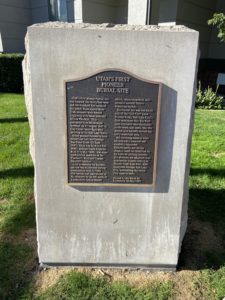
A plaque mentioning the pioneer cemetery and Native American burial ground on the corner of 300 South and 200 West. (Eliza Pace, KSL TV)
“We’re still finding artifacts in this area, so there’s probably remains still around here,” Robinson Hill said. “A lot of times, they do not disclose that information when it comes to indigenous burial grounds in urban settings or even cemeteries like in “Poltergeist,” they don’t disclose that information. People don’t know, ‘hey this used to be an old cemetery.’ ”
As we stood on the block, Quist showed me where these unmarked graves were based on the archaeology report. Meanwhile people walked in and out of the apartment building, some with their morning coffee, some with their pets headed out for a walk, with no idea what had been, and potentially still remained, beneath the surface.
Liberty Crest Apartments
The Liberty Crest Apartments, built on what was formerly a Scandinavian Methodist Episcopal church, was also the home of one of Salt Lake’s first serial killers, Reverend Frances Hermann.
The church sat at 158 S. 200 East in Salt Lake City, the location of Liberty Crest Apartments now.
Hermann who was a well-known pastor in Scandinavian social circles lived in several other states before moving to Salt Lake City in 1895.
“So the Reverend lived in the church, there was kind of a housing unit associated with it, but also a Mr. John M. Hanson, he resided in the second story apartment in the church and he was on the board of trustees,” Quist said. “He was always pretty suspect of the reverend.”
Hermann was known to be close to a 25-year-old Swedish immigrant named, Henrietta Clausen also spelled Clawson by some sources.
“The last time Miss Clausen was seen alive was in the company of the Reverend,” Quist said. “Hansen, the trustee and his wife – they were suspicious since their good friend, Miss Henrietta Clausen, who was a young Swedish immigrant had gone missing.”
Clausen was last seen Sept. 29, 1895 and then disappeared.“She was well known to have been madly in love with him and had been sleeping in his study,” Quist said. “Now the reverend of course denied any improper behavior.”
Apparently Clausen had confided in a friend that he’d proposed marriage to her, that she was pregnant and she had been sleeping in his quarters in the church.
“He certainly had pursued her…” Quist said. “Although I think the cover story was she was his housekeeper.”
When asked about her disappearance, the Hermann said she had “propositioned him” and he in turn rebuked her.
“He said because of his rebuff of her, she must have left the state, and that’s why nobody had seen her,” Quist said.
On Sept. 30, 1895, Hermann had the janitor of the church, only identified as “Johnson,” clean out the furnace in the basement of the church for a fire. The furnace had previously been used to warm the church, but because of a fire that nearly destroyed the building years before, was no longer used.
John M. Hanson who resided in the second story of the church observed that soon after that, Hermann lit a large fire in the furnace accompanied by a terrible stench.
It wasn’t until months later, sometime around May 1896, that Hanson investigated the basement of the church. Hanson found a knife blade, a garter buckle, corset steel, a belt buckle, two straight razors, and several human bones in the Church’s ash grate.
After the human remains were discovered, police became involved and made an even more harrowing discovery: the decomposing torso of Clausen buried in a corner of the church’s dirt floor basement.
Items also recovered by police included bloody overalls of the Reverend found in a bloody barrel, and two false teeth from Clausen.
“They didn’t have real dental records way back then, but they did have a dentist here in Salt Lake who remembered putting in, or working on her mouth and installing those teeth for her,” Quist said. “That’s how they identified the body as being Miss Clausen.”
The door of the furnace was smeared with blood and at 10 inches by 6 inches, was a small opening to fit a body into.
“The police believed that the barrel was used as a butcher block to dismember the body so that at least parts of it would fit into the furnace.”
Police searched two trunks in Hermann’s study and found items belonging to Clausen and another missing Swedish immigrant, Annie Samuelson.
“So now they’ve got two victims,” Quist said. “The police also found bottles of poison, chloroform, which is what I suspect he used, and other drugs, some of which produced abortions and they were found in reverend’s study.”
“Now Miss Samuelson had an aunt living here locally and the aunt admitted to her niece having ‘improper relations,’ ” Quist said. “Her aunt said that the reverend had performed an abortion shortly before her disappearance.”
At that point it was 30 to 40 years in prison if a doctor was caught for providing an abortion, and anyone considered an accomplice to an abortion also could serve jail time.
“According to members of the church, Miss Clausen, after she had gone missing, that’s when Annie Samuelson became the reverend’s favorite. She went missing in January.”
Soon after she went missing Hermann pawned her gold watch and ring.
“So police suspected that Annie Samuelson had also been poisoned by the reverend, her body dismembered, and either burned or buried elsewhere because he was also known to take midnight rides in his carriage out into the country,” Quist said.
The city was shocked and the story was widely circulated, first in Salt Lake and then reaching headlines in papers in San Francisco and Arizona. The Salt Lake Herald reported the story with the headline, “Sanctuary of God defiled with blood” on May 23, 1896.
“Since then the Salt Lake readers were just enthralled and followed this for like the next several months” Quist said.
“It was also found that the reverend embezzled $7,000 of church funds so that’s around $300,000 today, a lot of money,” Quist said.
Here’s where it gets really interesting or just really creepy.
“He [Hermann] had been married three times before and in each instance his wife died under mysterious circumstances and two of his three children also died in unusual circumstances,” Quist said.
Quist and Robinson Hill say there are likely multiple other victims.
“The pattern with serial killers is one, two, if there’s two then there’s a likelihood of more. You don’t just start with one, and you don’t just start with two because then they’re like, ‘I know how to do this,’ ” Robinson Hill said.
Hermann never returned to Salt Lake City and was never charged for his crimes.
The church fell into disrepair and was eventually torn down in 1906, mostly due to the memory of the heinous crimes committed on the premises. The Liberty Crest Apartments remain — standing over the ground where a dismembered and decomposing torso was once found.
The residence of a vicious serial killer who was never apprehended, is now home to hundreds of people.
Adolescent suicides in several US states increased during the pandemic, research shows
(CNN) — The mental health of Americans has suffered during the COVID-19 pandemic, and new research shows the damage wasn’t limited to adults.
The number of suicides among adolescents between the ages of 10 and 19 increased in five states during the pandemic, according to research looking at 14 states published in the journal JAMA Pediatrics on Monday.
Data from Georgia, Indiana, New Jersey, Oklahoma, Virginia and California also showed an increase in the proportion of adolescent deaths by suicide relative to suicides by people of all ages, the authors found. Conversely, Montana had a decrease in adolescent suicides and the proportion of adolescent deaths by suicide during the pandemic, while Alaska had a decrease in proportion only, the research found.
“Suicide-risk screenings have yielded higher positive rates” during the pandemic than beforehand, the authors said. And in 2021, the American Academy of Pediatrics declared a state of emergency concerning children’s and adolescents’ mental health.
To measure the impact of this heightened risk, the researchers partnered with public health departments in 14 states and looked into death certificate data on more than 85,000 people who died by suicide. The authors compared two time periods: 2015 to 2019 and 2020, which is the pandemic year they analyzed.
The findings highlight the need to pay attention to any behaviors adolescents show that can signal suicidal thoughts, said Marie-Laure Charpignon, the first author of the study and a doctoral student in statistics at the Institute for Data, Systems and Society at the Massachusetts Institute of Technology. “We’re all kind of blind within our own families or households,” she added. Sometimes “we see what we want to see, or what we have the opportunity to see in the limited amount of time we have.”
Factors behind adolescent suicide risk
Why certain states had an increased number of adolescent suicides is a “tricky question,” and the answer could depend on many factors, Charpignon said.
Knowing whether the deaths of adolescents’ caregivers during the pandemic influenced the increase in adolescent suicides requires further research with local health departments, Charpignon said. Whether virtual or hybrid school settings in these states during the pandemic could have negatively affected adolescents’ mental health, and therefore their suicide risk, is also unknown, Charpignon said.
Having this geographical data could help public health experts reconsider where they allocate mental health services, she added.
This research isn’t the first to look into adolescent suicidality in the United States during the pandemic. Emergency department visits for suspected suicide attempts among youth, especially girls, ages 12 to 17 started to increase in May 2020, according to a US Centers for Disease Control and Prevention study. The same study found that from February 21, 2021, to March 20 of the same year, visits increased by 50.6% among girls and 3.7% among boys in that age range, when compared with the same time period in 2019.
Peers and caregivers should watch for any negative changes in how adolescents express themselves or how often they communicate, Charpignon said. Concerned parents can talk with health professionals and their children’s teachers, in case they have noticed any behavioral changes, she added.
Suicide risk factors also include mental or substance abuse problems or a family history of them; negative life events; family history of suicide; familial abuse of any type; household guns; impulsive behaviors; and exposure to others’ suicidal behaviors, according to Johns Hopkins Medicine.
Other common warning signs — which could also indicate depression — according to Johns Hopkins Medicine, include the following:
- “Changes in eating and sleeping habits”
- Loss of interest in activities or school
- “Neglecting one’s personal appearance”
- “Obsession with death and dying”
- More complaints of physical ailments linked to emotional distress
- “Problems focusing”
- “Lack of response to praise”
- “Verbal hints such as ‘I won’t be a problem much longer’ or ‘If anything happens to me, I want you to know…'”
- Giving or throwing away cherished belonging
- Cheeriness after a depressive episode
Expanded access to suicide risk assessments and grief counseling for coping with loss of caregivers could be helpful interventions for adolescents at risk for suicide, according to the study authors.
The researchers have recently examined adolescent suicides in all other states and plan to submit those findings for peer review April 25, Charpignon said. Further research that looks at racial and ethnic differences is also needed, the authors said, since “pandemic-period suicidality may be differentially affected by race and ethnicity.”
The-CNN-Wire™ & © 2022 Cable News Network, Inc., a WarnerMedia Company. All rights reserved.
Suicide prevention resources
If you or someone you know is experiencing suicidal thoughts or exhibiting warning signs, call the National Suicide Prevention Lifeline at 1-800-273-TALK (8255) or the Utah Crisis Line at 1-800-273-8255, which is answered 24/7/365 by crisis counselors at Huntsman Mental Health Institute.
You can also text TALK to 741741 and parents, students, and educators can download the SafeUT app chat or call 833-3SAFEUT to connect with a licensed crisis counselor.
Additional resources
- Parents, students, and educators can download the SafeUT app chat or call 833-3SAFEUT to connect with a licensed crisis counselor.
- First responders, including firefighters, law enforcement, EMS, and healthcare professionals, can chat with a crisis counselor at no cost 24/7/365 by downloading the SafeUT Frontline app and members of the National Guard can access help through the SafeUTNG app.
- For non-crisis situations, when you need a listening ear as you heal and recover from a personal struggle, call the Utah Warm Line at 1-833 SPEAKUT 8:00 a.m.-11:00 p.m., 7 days a week, 365 days a year.
- At Huntsman Mental Health Institute, women can access maternal mental health services including birth trauma, pregnancy loss, infertility, and perinatal mood and anxiety disorders.
- LiveOnUtah.org, a campaign by the Utah Suicide Prevention Coalition offers suicide prevention training and has resources for faith-based groups, youth, LGBTQ+, and Employers.
Other community-based organizations that provide suicide prevention services, support groups, mental health education, counseling services and support:
- NAMI Utah: education, support and advocacy for individuals and families impacted by mental illness
- Latino Behavioral Health Services: Latinx mental health education and support
- American Foundation for Suicide Prevention: Utah Chapter
- Encircle Utah: LGBTQ+ family and youth resource center
- Utah Pride Center: empowers Utah’s diverse LGBTQ+ community
- U.S. Department of Veterans Affairs mental health
- Center for Workplace Mental Health: suicide prevention and response for employers
Additional crisis hotlines
- Utah County Crisis Line: 801-226-4433
- Salt Lake County/UNI Crisis Line: 801-587-3000
- Wasatch Mental Health Crisis Line: 801-373-7393
- National Suicide Prevention Crisis Text Line: Text “HOME” to 741-741
- Trevor Project Hotline for LGBTQ teens: 1-866-488-7386
Genetic testing impacts the decisions one Utah family is making after cancer diagnosis
HERRIMAN, Utah — What if you knew your chances of getting cancer were higher than most people? And what if you knew there was a way to intervene before you got sick? One Utah family shares how genetic testing is impacting the decisions they make.
Sometimes, you find luck on your side. And other times?
It’s not so simple.
Jeff’s Diagnoses
65-year-old Jeff Fowler was diagnosed with breast cancer last March. He found a lump on his left breast about a year before but didn’t think much of it, especially since he is a man.
He grew much more concerned when the lump grew to about four centimeters.
“I could actually see it in the mirror,” he said. “You automatically go to the worst case scenario in your mind and you start thinking, ‘Wow, this is deadly.’”
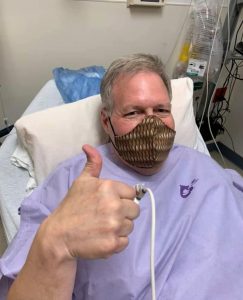
After being diagnosed with breast cancer last March, Jeff Fowler had a double mastectomy and reconstructive surgery. He is not on a hormone blocking medication and his condition is stable.(Used with permission: Jeff Fowler)
But the real shock came when Fowler tested positive for the BRCA2 gene mutation, a variant that puts him and his family members at an increased risk for certain types of cancer.
“It became real when I saw the family history,” he said.
Four of his uncles died of prostate cancer and two of his aunts died from breast and ovarian cancer.
Genetic Testing
Intermountain Healthcare genetic counselor, Emily Bonham, urged Jeff to invite his family members to also be genetically tested.
“If you have the gene change, there will be a 50/50 chance that each of your children, each of your siblings, and parents also carry that genetic change,” she explained.
“They gave me a letter that I could share with all my siblings and even cousins,” Fowler said.
Fowler approached each of his siblings and his children.
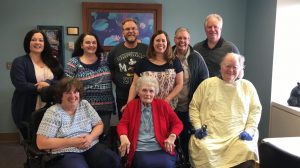
Jeff Fowler is pictured with his siblings. He was diagnosed with breast cancer last March and tested positive for the BRCA2 gene mutation. His genetic counselor encouraged him to invite his siblings and children to also be tested. All but one of his living siblings took the test, though not all of them tested positive. (Used with permission: Jeff Fowler)
“‘Hey, I have cancer. It’s caused by a genetic mutation that looks like it comes through dad,’” he told them. “This is a real thing and I think we all should get tested.”
All but one of Fowler’s living relatives took the test, but not all tested positive. His sister, Kathy Jensen, took the test through a blood draw.
“Part of me wondered, ‘Do I really want to know?’ but you know, I have five kids,” she said. “And I thought, ‘You know what, I probably should find out.’”
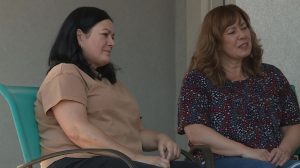
Kathy Jensen (on the left) sits with her sister. After her brother, Jeff Fowler, tested positive for the BRCA2 gene mutation she also took the test. When she too received positive results for the mutation, she chose to have prophylactic surgery to remove her ovaries and tubes and is also having a double mastectomy this month. (Stuart Johnson, KSL TV)
Jensen did test positive for the variant.
“It was a shock and scary and I immediately started to think about my kids and my grandkids,” she said. “I had a potentially 86 percent chance of getting breast cancer with this gene mutation.”
Next Steps
After getting her results back, Jensen chose to have prophylactic surgery.
“I had my ovaries and tubes removed in August,” she said.
Jensen is also having a double mastectomy this month.
“It’s not an easy decision, but I don’t want cancer,” she said. “When you know your risks are so high, to me that was just the right answer.”
Though she is nervous, she says the knowledge is empowering.
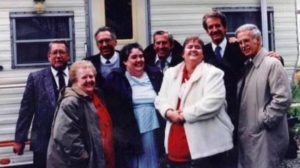
Jeff Fowler’s father is picture with his aunts and uncles. When Fowler was diagnosed with breast cancer this year and the BRCA2 gene mutation, he took a closer look at his family history. Four of his uncles died of prostate cancer and two of his aunts died from breast and ovarian cancer, cancers which are also caused as a result of the BRCA2 variant. (Used with permission: Jeff Fowler)
“It is a big step, but it’s also takes away my risks significantly,” she said. “It’s good to know because I have choices now. It’s not going to just surprise me.”
“By learning about these things, we hope that we can prevent certain health conditions that run through families,” Bonham explained. “We can be more proactive when you have a family history of a health condition.”
Jeff Fowler’s 38-year-old son, Chris Fowler, tested positive for the gene variant too. He has five boys of his own who also could be affected by the variant. He is now taking actionable steps early on to prevent cancer.
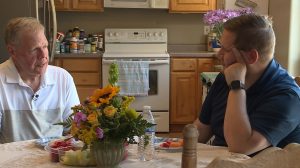
Jeff Fowler sits with his son, Chris Fowler, who also tested positive for the BRCA2 gene mutation. They are both taking great measures to change their diet with increased vegetable and fruits, healthy proteins and grains, and lots of water to prevent further cancer growth. (Stuart Johnson, KSL TV)
“There’s things that I can do, from my own standpoint, to provide best quality of life for myself and also to stay around and grow old with my boys,” he said. “I’m grateful for that technology, that science that exists to allow us to take charge of a little bit of our future at least.”
“It’s gonna give me opportunities to really be aware and take charge. It’s empowering,” he added.
Chris Fowler will start screening earlier and is adopting a healthier diet, like his dad.
Preventing Cancer
Jeff Fowler’s oncologist recommended that he start meeting with a dietician.
“She said the dietitian can do more for you with cancer than I can ever do for you,” Fowler recalls. “I had to give up sugar, had to give up my diet sodas, a lot of the carbs go away… I just can’t grab fast food or things that are unhealthy for me because they could also feed any cancer that could be there.”
He’s increased his vegetable and fruit intake, eats foods that are high protein, and drinks lots of water.
“All that is part of me taking proactive steps, because I already have the cancer, to then stack the deck to avoid any more complications and give myself the best chance,” Jeff Fowler explained.
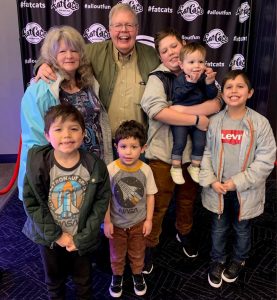
Jeff Fowler and his wife are pictured with five of their grandsons. Their father, Chris Fowler, also tested positive for the BRCA2 gene mutation. They know this gene could also affect Chris’ sons and they are doing everything they can now to take proactive . steps to prevent cancer(Used with permission: Jeff Fowler)
“[There are] many ways that they can control those factors beyond their genetics, to hopefully not end up developing cancer,” Bonham said.
She says understanding genetic cause can also impact treatment.
“[It] can lead to a more targeted treatment, [or] another medication that may work better for that cancer,” she explained.
Jeff Folwer had a double mastectomy and reconstructive surgery, and will continue to monitor his health. Now he is on an estrogen blocking hormone for the next five to ten years.
He’s felt humbled throughout this whole experience and found himself turning to God.
“Now, I see things differently,” he said. “It’s brought a sense of gratitude to me.”
Fowler says being aware of his genes has given him the tools he needs to best care for his health.
“I think that knowing gives you the ability to find every resource, every technique, everything that you can do,” he said.
The Fowlers started a Facebook page to reach as many relatives as they can in hopes that cancer doesn’t have a chance. Between Jeff’s eight siblings, four children, and fourteen grandchildren, they know his diagnoses affects generations.
“It’s going to be hundreds of people, if even not more overtime,” he said. “I’ve decided I want to be around as long as I can, you know, and I want to enjoy life,” Jeff Fowler said.
The BRCA2 gene mutation also puts Jeff Fowler at an increased risk for prostate, pancreatic, and skin cancer.
HerediGene Population Study
Intermountain Healthcare has launched the largest DNA study in the country to help more families like the Fowlers. It’s called the HerediGene Population Study and is designed to understand new relationships between genetic changes and risk for certain health conditions.
Researchers are analyzing the genes of 500,000 people, with the goal of better predicting and preventing chronic disease like diabetes, cardiovascular disease, neuro-degenerative disorders, and cancer. They estimate two to three percent of participants will be notified about an immediate health concern and will have an opportunity to meet with a genetic counselor to make a plan.
Doctors believe the study will impact the health of generations to come. Anyone can participate for free through a simple blood draw, or for children under 18-years-old through a cheek swab, at any Intermountain Healthcare lab or call 1-833-698-1727. You can also register online here.
Holladay Family Receives Letter, Harassing Them For Supporting BLM
HOLLADAY, Utah — A family in Holladay said someone sent them a letter, harassing them for supporting Black Lives Matter, and then their BLM sign was stolen. And the family said they’re not alone.
Brannon Richardson thought he knew what to expect when he and his family moved to the neighborhood. But just three weeks in their new home, they received a letter from an anonymous sender that said the following:
Dear neighbor,
Your support of communism and anti-American Marxist groups like black lives matters has been noted by the freedom loving police and military supporters and members in this area.
You may not be educated about the origins or real purpose of the BLM organization and just got caught up in the catch phrase “movement” with blind support not realizing the sign in your yard says you are anti-police, anti-military, and pro-criminal.
If after researching the BLM organizations founders, history, background and goals and you are aware of the true meaning and goals of BLM we suspect the sign be removed so that you are not unfairly labeled an enemy of the country and the patriots that defend it.
If after learning about the Marxist founders of BLM that you currently support, and your anti-police anti American views stand we would strongly urge you to move to one of the many existing communist nations that will openly embrace your idea of freedom as communists are not welcome and communism/socialism will not be tolerated here.
It starts out…
“Dear neighbor, Your support of communism and anti-American Marxist groups like black lives matters has been noted…” pic.twitter.com/UzsVbZ5Ris
— Matt Rascon KSL (@MattRasconKSL) July 30, 2021
“I kind of felt this area wouldn’t be that way,” Richardson said. “I feel like what they’re saying with this is like, ‘Well, it’s our way or we don’t want you here.’”
It wasn’t the welcome they hoped for, but Richardson said the letter wasn’t harmful. Written words are one thing, criminal acts are another.
Less than 24 hours after receiving the letter, Richardson said he came outside and found his BLM sign missing and their pride flag torn or cut off and stolen.
Richardson said he is pro-police, and they filed a police report, bought a new flag and sign and then bought surveillance cameras. And less than a week later, their newly-installed cameras captured someone knocking over their pride flag one night, and then the next night, someone stole the flag and pole and rode off on a bicycle with it.
“I feel like if you want to do something that’s contrary to my belief, well you can do that on your own property and put up whatever sign you want,” he said. “And those people can feel safe and know that I’m not going to take that from them.”
It’s unclear if the same person or group is behind the stolen symbols and the letter. But what has become clear is that the Richardson’s aren’t alone in feeling targeted for their support of Black Lives Matter.
After posting the letter to Nextdoor, they heard from neighbors in and around Holladay who commented with pictures, showing that they had received the same message.
“I believe everyone has the right to express themselves or support the organizations they want to support without being harassed,” Richardson said.
Unified Police confirmed they have received multiple reports of a letter directed toward supporters of BLM.
Sgt. Melody Cutler with UPD said the letter doesn’t contain any direct threats and so it is considered protected speech.
Police tell me the letter doesn’t contain direct threats so it is protected speech. But the theft, of course, is criminal. #ksltv
— Matt Rascon KSL (@MattRasconKSL) July 30, 2021
For Richardson, the sign and flag aren’t as much about what he opposes, as they are about sending a message to others that they are welcome and that they have an ally. And he said the sign is here to stay.
“I mean, we’re just going to keep putting it out,” he said. “We don’t want our rights to express what we want to express diminished in any way and we don’t think anyone else’s should either.”
A Short History Of American Food (Whatever That Is)
Your Thanksgiving table may be smaller this year, but if it’s still full of squashes, corn pudding, turkey and cranberry sauce, thank Native Americans — those foods are indigenous. But that apple pie is international — apples are from Kazakhstan and the pie part is from England.
It’s hard to define what “American food” is and yet many historians have tried. Yale Professor Paul Freedman is one of them and last year published “American Cuisine and How It Got That Way.”
“The exuberance of American dining is its saving grace,” says Freedman. “… Despite the fact that many things are, you know, not all that good for you.”
Americans get pretty excited about food, as does much of the world, but historians like Freedman say we actually share some key culinary traits that are uniquely American in origin and we’re not talking about throwing everything in the deep fry. Fast food will always be an American hallmark, even though we’re eating less of it these days, but we’re more than McDonald’s and cheese-in-a-can and we’ve even exported some very American ways of eating. Yes, France. You’ve learned a thing or two from us, too.
To understand what our tastebuds all have in common, let’s look at five key developments in the history of America’s eating habits.
1) The good old days when sugar was healthy
Up until the late 1800s, people preferred to eat the foods that filled them up. Dairy, meat, hominy, oatmeal and sugar were staples — vegetables, not so much. Vitamins wouldn’t be fully appreciated until the 20th century.
“They didn’t like spices because they think they created indigestion and were a distraction from the actual food,” says Freedman, who noted that spices were considered the “food of the poor.”
Historian Sarah Lohman says that it wasn’t quite as bland as it sounds. Mary Randolph’s 1824 cookbook, “The Virginia House-Wife,” calls for chili peppers.
“It’s really, really influenced by indigenous cultures and, in particular, by enslaved people who come from the Caribbean, by enslaved people who come from Africa or African descendants,” says Lohman.
2) Food travels around the country
In the 19th century, while New Englanders were eating brown breads and brown stuffing, the South had its pork, molasses, greens, griddled cornmeal and corn breads.
Black cooks had a hand in our cuisine from the very beginning. From South to North, their contribution was so ubiquitous its significance has been long overlooked.
Just one example is the story of ice cream. James Hemmings, Thomas Jefferson’s enslaved chef, traveled with the family to France, learned the art of making ice cream and brought it back to the US along with copper cookware, European-style mac ‘n’ cheese and French fries.
Historian Jessica Harris is lead curator for the exhibition “African/American: Making the Nation’s Table” at the Museum of Food and Drink in New York City. She said other Black chefs traveled early on with aristocrats as they left the South for summer homes in places like Newport. Later Black Pullman operators moved west along with the railroads, bringing their families and their familiar food. After the Civil War, the Great Migration brought Black cuisine just about everywhere.
“It’s about looking at history, looking at culture, looking at any of those things as science through the spyglass of food,” said Harris. “And it’s a great spyglass because it’s one everybody shares.”
Then in the late 19th century, it’s New England’s filling, yet perhaps monochromatic, food that comes to the forefront.
3) The pure joy of home economics class
Scientific ideas around food have always existed, but in the late 1800s, people began to prioritize invisible components of food learning, such as how to avoid illnesses like scurvy, beriberi and pellagra. Vegetables became a bit more important — albeit cooked for long periods of time.
A woman’s kitchen became her laboratory and her cookbooks were her study materials. What was thought of as “nutrition” was incredibly important and yet women couldn’t learn how to cook from Mom, nor did they want to.
“The idea was that you shouldn’t just do everything the way your mother did because that was, first of all, drudgery,” says Laura Shapiro, an historian who writes about women and food. “It was really hard work and it wasn’t modern.”
Starting in 1890, Fannie Farmer began turning hearty New England dishes into sophisticated meals, though sometimes that meant your plate was all white or all brown. The textbook she wrote later became “The Fannie Farmer Cookbook” and its popularity lasted for decades, until usurped by “The Joy of Cooking” in the 1930s.
Shapiro says Farmer’s writing was rather dry but she did have her fun. Farmer invented the ginger ale salad that congeals canned fruit in gelatin and soda.
Her book came out right as families were moving further away from their home base and spreading out across the country.
“You are this young bride and you have to cook in your new home and you don’t know how,” says Shapiro. “Once you learn, you can do all this wonderful cooking and your husband will be healthy and he won’t become an alcoholic.”
That’s a lot of pressure to put on your meatloaf. Thankfully, Americans got some help when we really didn’t earn it.
4) When we get what we don’t deserve
Immigration, migration and variety in manufacturing are where we start to see America really start to form eating habits that separate us from other countries. While every country in the world has immigration, in America it happened on a large scale and very early on.
Historian Sarah Lohman spent years leading tours and classes about the lives of immigrants for New York City’s Tenement Museum and traveled to 12 different parts of the country for her book, “Eight Flavors: The Untold Story of American Cuisine.”
“At the same time that domestic science is becoming a part of the American food landscape, that’s also when we’re seeing a huge influx of immigrants from Italy and Eastern Europe, particularly Jewish immigrants,” says Lohman.
Lohman says Eastern Europeans brought their love of sour foods, Italians brought on the garlic. Their food changed when the reached America, with Italians in particular opting for foods like olive oil and aged cheeses. Back in Italy, these were expensive exports only, but in the States Italians could afford them and they used them liberally.
That’s also true for Chinese cuisine which spread steadily across the country just as prejudice was growing against Chinese people. Kevin Kim researches the history of Chinese people in the Deep South and is working on a project about the continued displacement of urban immigrant communities for the Smithsonian Anacostia Community Museum.
“One of those contradictions and complexities is that Chinese food in that early period is marked by exclusion,” says Kim. “It’s marked by racism but at the same time there is this hunger for something exotic and yet familiar.”
The Chinese Exclusion Act of 1882 was aimed at keeping out Chinese laborers who came to the US for plentiful jobs, but the Act contained exceptions. Merchants who owned stores and grocery stores were exempt and later on, so too were restaurant owners. The number of Chinese restaurants doubled from the early part of the 19th century to the mid-20th century.
Kim explains that these restauranteurs brought their own Asian flavors and cooking methods but adapted them by growing or using local ingredients. Broccoli wasn’t used in China but appears on Chinese menus here. Chinese cooks living in African American and Caribbean neighborhoods added collard greens or fried chicken to their menus.
Another boom comes when immigration opens up in 1965, bringing people from many parts of Asia. While immigration begins to melt its way into American meals, more variety came as American manufacturing moved like warp speed into a new era.
5) With industrialization comes flavors and more flavors
Processed foods like cake mixes and powdered eggs existed before the great World Wars, but they reached new levels when the wars were over. Innovations like canned and frozen foods that fed troops en masse were still being made at lightning speed and manufacturers needed to find a new market for them.
So, companies focused their attention on women at home. Grocery stores were game: Their produce requires a lot of manpower and much of it ends up getting thrown out, unlike those rows and rows of canned tomatoes.
“The food industry wants you, to this day, to think that cooking is an incredible drag and an imposition on your time,” says Freedman. “Otherwise, you’ll buy potatoes and mash them and they don’t really make a whole lot of money out of your buying potatoes. They make money out of your buying instant mashed potatoes.”
Shapiro says manufacturers created the notion that women were always busy, always running out of time. So, they were “creating a world in which every day, every meal was an emergency.”
“Never say that women welcomed it,” says Shapiro, railing against the images portraying happy women in ads for quick mixes. “That is just bullshit. The women put up a huge resistance. The food industry was astonished.”
Decades later as people do start to pack their schedules, those processed foods are still there. But instead of that one can of tomatoes, you now have Italian-style canned tomatoes, Spanish-style canned tomatoes and, even more inexplicably, low-sodium canned tomatoes. Shouldn’t they have been low-sodium to begin with? Who needs high-sodium canned tomatoes?
“Variety comes in to mask the idea that things are processed,” says Freedman. “It kind of distracts attention from the fact that industrial food loses some of its flavor and freshness by the very fact of its being processed.”
American food as it is now
Now we eat so many, many things, both processed and fresh, both familiar and exotic. We love it all as evidenced by the massive popularity of food television, food magazines, food museums and food exhibitions. That’s a worldwide phenomenon.
“Most people like to eat and like to come together around food,” says Catherine Piccoli, Acting President of the Museum of Food and Drink. “But it also is something that allows us to learn about one another.”
Freedman found through his research that in the mid-20th century, the sheer variety of flavors in our supermarkets astonished people visiting from all over the world. Now, that variety is found everywhere, but historians argue it started in America first. Americans have long been willing to try new things, both in the supermarket and while eating out.
“A hallmark of American cuisine is variety and variety includes exuberance,” says Freedman. “Americanization has come to the world, not by McDonald’s, but by eclecticism.”
University Of Utah Researchers Discover Genes Linked To Suicide
SALT LAKE CITY, Utah – Researchers at University of Utah Health’s Huntsman Mental Health Institute have detected more than 20 genes that may play a role in suicide.
The research is the first of its kind, and a Utah mother who is still grieving doesn’t find the results surprising.
Michelle Nelson stands in the bright kitchen of her 101-year-old house in Salt Lake City.
“Amethyst, opalite and crystal,” she said, picking up the small stones from a dish on the counter.
She collects them to help her heal because picking up the pieces after loss is daunting.
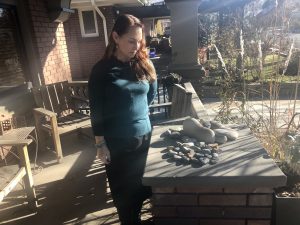
Michelle Nelson collects heart rocks to remind her of her son, Roan, who died by suicide. She says new research is giving her hope. (KSL-TV)
“I take Roan everywhere I go,” she said.
Nelson collects heart rocks — stones that naturally form into a heart shape which she finds outside.
“It’s like a gift from nature that reminds me of him,” Nelson said.
Two years ago, her 16-year-old son, Roan McClain, died by suicide.
“It was the biggest shock of my life,” she said. “You think your kids are always going to be okay.”
Her family has a history of suicide.
In a new study, researchers at the Huntsman Mental Health Institute discovered 22 genes that could have a role in suicide deaths. It establishes that suicide is partially heritable independent of a shared environment.
“We looked at over 3,400 samples of individuals who had lost their lives to suicide in Utah,” said Dr. Anna Docherty with the Huntsman Mental Health Institute.
The study, among the first comprehensive genome-wide analyses of suicide death, also found significant genetic cross-connections to psychiatric diseases and behaviors associated with suicide, researchers said.
“Understanding that there’s a strong genetic component will destigmatize the subject of suicide,” Docherty said.
The goal of the research is to inspire discussions among families and with their healthcare providers to know when to get support, Docherty said.
“If you have a family history of suicide, it really pays to learn about all the myriad risk factors and ways that you can really promote health in your family.”
For Nelson, it inspires hope.
“Maybe, if we could look at our kids and say, ‘Hey, you really are at risk. What can we do to get ahead of this?'” she said.
Scientists hope identifying these genes could lead to better predicting who’s at risk and finding better ways to help them.
In the meantime, Nelson continues to find comfort in nature, and her collection of heart rocks.
“When you lose someone close to you, your whole life changes,” she said. “You have to notice the little things. You have to go back to those small things, like the rocks.”
Next, researchers plan to dig into the molecular genetics of suicides to understand the links, and to find drug therapies.
If you or someone you love needs help, call the Utah Crisis Line at 801-587-3000.
SALT LAKE CITY — Family Search just hit a major milestone, now offering 8 billion names on their database.
This comes just in time for Hispanic Heritage month as consultants say those archives are some of the fastest growing.
Just because the doors are closed doesn’t mean the resources available at the Family History Library have slowed down. If anything, they’ve sped up.
With the pandemic, Family History researchers started doing online consultations and have helped hundreds of people around the world.
It’s a service that wasn’t available before and which they say is getting a lot of interest from the Latin community.
A great way to celebrate Hispanic Heritage month by connecting with the past.
“I’ve helped people in Guatemala,” said David Renchard, director of the Family History Library. “It’s just an incredible thing to converse with them face-to-face on-line, and to be able to solve their problem.”
“Si no hablas Ingles tiene la oportunidad de tener la cita en Espanol. We also speak Spanish so you can get an appointment in your language,” said Debbie Gurtler, Latin American research expert at the Family History Library.
The Family History Library of The Church of Jesus Christ of Latter-Day Saints said the free on-line consultations have been so successful they will continue offering them after COVID ends.
They also said if you’ve searched a name before and came up empty handed, try again because they add 1 million new names every day, especially from countries like Mexico where records database are booming.
SALT LAKE CITY, Utah – Unless new protections are put in place, an estimated 30 to 40 million renters could face eviction in the coming months, according to an analysis of U.S. Census Bureau data.
“The United States may be facing the most severe housing crisis in its history,” said the report from the Aspen Institute.
If renters can’t afford their housing, the institute warns that many property owners will also not be able to make mortgage payments.
“If conditions do not change, 29-43% of renter households could be at risk of eviction by the end of the year,” the report goes on to say.
Utah’s 45-day protection against evictions expired in mid-May and the federal moratorium on evictions expired in July. That moratorium was one of the many ways state and federal government officials responded to the financial crisis caused by the pandemic.
“Monday morning we had a line in front of our building the whole morning,” said Bill Tibbitts, associate director of the Crossroads Urban Center, which runs an emergency food shelter. “For us, that’s a sign that some of the types of short-term relief are wearing off.”
Tibbitts said the concern is how the unemployed will be able to afford September’s rent now that they are no longer receiving the extra $600 weekly boost from the federal CARES Act, which also expired in July.
“We’re worried that things are going to get worse,” he said. “There’s just no doubt that we’re going to see a wave of evictions and a wave of people needing help.”
Affordable housing advocacy groups have called on Gov. Gary Herbert to issue a new moratorium on evictions, including members of Wasatch Tenants United who gathered at the Salt Lake City and County Building Wednesday evening.
The Utah Apartment Association said most Utahns are keeping up with their rent payments and that a new eviction moratorium isn’t needed.
“If you look at the eviction numbers, we are 41% below average for evictions,” said Paul Smith, the apartment association’s executive director.
Smith said that those who are struggling to pay rent are finding help by working with their landlords, through charity or other assistance programs.
“Utahns are generous,” he said. “Churches, family members are working with and helping people pay rent, so landlords, for the most part, are being made whole.”
He encouraged those needing assistance to apply for Utah’s rental assistance program.
Earlier this month the Utah Department of Workforce Services adjusted the requirements of the $20 million program, making it so those receiving unemployment benefits are now eligible to apply.
To apply for the rental assistance program, renters can call 211 or visit 211utah.org.
Utah doctor details his history with heroin and cocaine addiction
Dr. Robert Simpson is the medical director for Utah Addiction Medicine and is known for his work in harm reduction surrounding addiction — only after he beat his own heroin and cocaine addiction.
Growing up with big ambitions
“I began shooting heroin and cocaine at about 19-years-old … I went through college. I was addicted through university and then somehow or another I was admitted to a medical school,” Simpson says.
His life didn’t start like this though. He grew up in London where his attraction was towards traveling carnivals and oil fields. All the while, beginning to experiment with heroin and cocaine.
As his addiction began to permeate his every thought, he realized he needed to find a career that would allow his addiction to flourish.
Queue medical school.
Robert was always smart when it came to his schooling. He attended a university and was even accepted into medical school, completely addicted to heroin and cocaine.
From addict to doctor
“About the end of medical school, the heroin and cocaine just kind of stopped working; they quit me,” he said. “I thought I was doing pretty well. I still was not drinking like a gentleman and I didn’t mind taking some pills but I thought, ‘I don’t have needles hanging out of my arm, I’m doing pretty bloody well really.'”
Do very well he did. Robert finished medical school within the top 10% of students in his class. He even moved out to Salt Lake City, Utah in 2000 to complete a fellowship at the University of Utah.
Unfortunately, during that fellowship, he herniated a disc in his back which led to excruciating pain. So much so, that he saw a doctor, who immediately gave him opioids for the pain. Given Robert’s previous stints with addiction, this newfound slipstream of opioids only pushed his addictive hunger even further. “Pretty soon, I was just too important and busy to have him go and write the prescriptions for me so I just thought I’d take care of it myself,” he said.
Even doctors are susceptible to addiction
The doses only escalated from there until he did the unthinkable — Robert, who was a successful doctor, began engaging in prescription fraud.
“I fraudulently wrote prescriptions in my name and two other people. I borrowed other people’s numbers; none of which I would think of doing today but I was in the midst of my addiction,” he described.
Robert began to write so many prescriptions for himself that he would get his pharmacies mixed up. He would write a prescription for one pharmacy and arrive at the completely wrong location. The entire process quickly became too overwhelming to handle. So, he went back to what he knew. The streets were calling to him and he needed his heroin fix.
“It was this odd paradox where I’m copping dope on the block and heading back up to the medical school and lecturing to medical students,” Robert recounted.
Thriving on the outside, dying on the inside
His career was skyrocketing in terms of research, teaching, clinical duties, and just performing well as a doctor. On the inside — he was crumbling at his core. “I was so hopeless. I was buying life insurance and annuities so that my family wouldn’t be destitute once I overdosed and died,” he said.
Until he had a “spiritual” experience that ultimately caused him to believe that he could get out of his addiction. But he knew he was going to need help. He realized he was going to have to own up to all of his struggles and all of his addictions. “One day it came to me very strongly. I was walking back from the pharmacy, bags full of stuff, and I went into my office, put the bags on my desk, and I just picked up the phone and I just called my boss and said, ‘Simpson here, drug problem, out.'”
He self-reported himself to the Utah Division of Occupational and Professional Licensing and his medical license was suspended. Dr. Simpson then booked himself into the Betty Ford Rehabilitation Center in southern California and he was set on getting healthy.
Once he had finished his rehabilitation, Dr. Simpson started helping out at the 4th Street Clinic. “We would go out on our bikes and find guys who didn’t want to go to the clinic and we’d just give them dry socks and chat with them. It helped me get off of my pity party about how mistreated I was by everybody.”
Moving forward and what’s next
For the next decade, Dr. Simpson began to work his way back into the medical field, even getting his medical license back. Now, he works as the medical director for Utah Addiction Medicine and promotes harm reduction to addicts throughout the state.
With his newfound appreciation for overcoming addiction, he understands the benefits of harm reduction and what it could do for an addict. “Harm reduction is about treating people, with substance abuse disorders, with respect [and] dignity, because they’re human beings. When we treat people that way, without judgment, we build relationships and once we’ve done that, we can start to work with people on just little things.”
He concluded, “Most people don’t know where to turn. If you’ve spent time and built this relationship in an unconditional sort of way, they know where to go.”
Listen to the entire episode below
For more information on addiction or if you or someone you know is struggling, you can find more information on Facebook and on KSL TV. To hear more from Casey Scott and Dr. Matt Woolley, you can listen below or subscribe to the ‘Project Recovery’ podcast on Apple Podcasts or wherever you get major podcasts.
Officials: Hanukkah Attack Suspect Researched Hitler Online
MONSEY, N.Y. (AP) — A man charged with federal hate crimes Monday in a bloody attack on a Hanukkah celebration had handwritten journals containing anti-Semitic references and had recently used his phone to look up information on Hitler and the location of synagogues, authorities said.
Grafton Thomas, 37, was held without bail after appearing in federal court in White Plains on five counts of obstructing the free exercise of religious beliefs by attempting to kill with a dangerous weapon. Five people were stabbed and slashed in the Saturday attack north of New York City.
A blood-stained 18-inch (45-centimeter) machete was recovered from his car, along with a knife smeared with dried blood and hair, prosecutors said in a criminal complaint.
Thomas, his ankles shackled, shuffled into the courtroom in a prison jumpsuit, telling a judge who asked him if his head was clear that he was “not clear at all” and needed sleep. But he added: “I am coherent.”
His court-appointed attorney, Susanne Brody, said Thomas has struggled with bipolar disorder and schizophrenia. Another attorney retained by his family, Michael Sussman, said Thomas had been hearing voices and may have stopped taking psychiatric medications recently.
The stabbings on the seventh night of Hanukkah came amid a series of violent attacks targeting Jews in the region that have led to increased security, particularly around religious gatherings.
A criminal complaint said journals recovered from Thomas’ home in Greenwood Lake included comments questioning “why ppl mourned for anti-Semitism when there is Semitic genocide” and a page with drawings of a Star of David and a swastika.
A phone recovered from his car included repeated internet searches for “Why did Hitler hate the Jews” as well as “German Jewish Temples near me” and “Prominent companies founded by Jews in America,” the complaint said.
On the day of the stabbings, the phone’s browser was used to access an article titled: “New York City Increases Police Presence in Jewish Neighborhoods After Possible Anti-Semitic Attacks. Here’s What To Know,” the complaint said.
Sussman told reporters he visited Thomas’ home and found stacks of notes he described as “the ramblings of a disturbed individual” but nothing to point to an “anti-Semitic motive” or suggest Thomas intentionally targeted the rabbi’s home.
“My impression from speaking with him is that he needs serious psychiatric evaluation,” Sussman said. “His explanations were not terribly coherent.”
Thomas’ family said he was raised to embrace tolerance but has a long history of mental illness, including multiple hospitalizations.
“He has no history of like violent acts and no convictions for any crime,” his family said in a statement. “He has no known history of anti-Semitism and was raised in a home which embraced and respected all religions and races. He is not a member of any hate groups.”
Thomas served in the Marines and was president of his class at a high school in Queens, Sussman said. He attended William Paterson University between 2005 and 2007, the university confirmed, where he played football as a walk-on running back.
Thomas’ family said his mental health deteriorated over the years. He would hear voices and have trouble completing sentences at times. Thomas said a voice talked to him about property that was in the rabbi’s house, according to Sussman.
In court papers filed in a 2013 eviction case in Utah, Thomas said he suffered from schizophrenia, depression and anxiety and his “conditions are spontaneous and untamed.”
Thomas was arrested within two hours of the Saturday night attack in Monsey. When police pulled his car over in Manhattan, he had blood all over his clothing and smelled of bleach but said “almost nothing” to the arresting officers, officials said.
Thomas’ aunt told The Associated Press that he had a “germ phobia” and obsessively washed his hands and feet with bleach.
She said Thomas grew up in the Crown Heights neighborhood of Brooklyn and “lived peacefully” among Jewish neighbors. She said Thomas had not been taking his medication and recently went missing for a week.
The woman spoke on the condition of anonymity out of fear she would lose her government job for speaking publicly.
“They’re making him look like this monster,” she said in a telephone interview. “My nephew is not a monster. He’s just sick. He just needs help.”
According to the complaint, Thomas, a scarf covering his face, entered the rabbi’s home next door to a synagogue and said “no one is leaving.” He then took out a machete and started stabbing and slashing people in the home packed with dozens of congregants, the complaint said.
The five victims suffered serious injuries — including a severed finger, slash wounds and deep lacerations — and at least one was in critical condition with a skull fracture, the complaint said.
On Sunday, Thomas pleaded not guilty to charged including five counts of attempted murder. He was detained on $5 million bail.
In a release, U.S. Attorney Geoffrey S. Berman said Thomas “targeted his victims in the midst of a religious ceremony, transforming a joyous Hanukkah celebration into a scene of carnage and pain.”
Thomas’ criminal history includes an arrest for assaulting a police horse, according to an official briefed on the investigation who was not authorized to discuss the matter publicly and spoke to the AP on condition of anonymity. A lawyer representing Thomas at the arraignment said he had no convictions.
The criminal complaint said one passage in Thomas’ journals stated that the “Hebrew Israelites” took from the “ebidnoid Israelites.” The FBI agent who wrote the complaint said that appeared to be a reference to the Black Hebrew Israelite movement, some branches of which have been associated with anti-Semitism.
The attack was the latest in a string of violence targeting Jews in the region, including a Dec. 10 massacre at a kosher grocery store in New Jersey. Last month in Monsey, a man was stabbed while walking to a synagogue. No arrest has been made in that stabbing.
Gov. Andrew Cuomo, a Democrat, said Saturday’s savagery was the 13th anti-Semitic attack in New York since Dec. 8.
Monsey, near the New Jersey state line about 35 miles (56 kilometers) north of New York City, is one of several Hudson Valley communities that has seen a rising population of Hasidic Jews in recent years. At a Sunday celebration that was planned before the attack, several members of the community stood guard armed with assault-style rifles.
“The Jewish community is utterly terrified,” Evan Bernstein, the regional director of the Anti-Defamation League of New York and New Jersey, said in a statement. “No one should have to live like this.”
In New York City, the Rev. Al Sharpton appeared Monday with Jewish and other faith leaders at his Harlem headquarters and said he was disturbed and upset that several of the suspects in recent attacks on Jews have been black.
“We cannot remain silent as we see a consistent pattern of attacks on people based on their faith and who they are,” Sharpton said. “You can’t fight hate against you if you aren’t willing to fight hate against everybody else.”
___
Mustian and Neumeister reported from New York. Associated Press writer Michael Balsamo in New York contributed to this report.
St. George Couple Urges People With Family History Of Colon Cancer To Get Screened Early
ST. GEORGE, Utah — Talking about family health history may not be the easiest conversation at the Thanksgiving dinner table, but Spencer and Jennifer Stucki are sharing their story to let people know how important knowing that history is — especially for those with a family history of colon cancer.
When asked what both Jennifer and Spencer love most about each other, their answers couldn’t be more in sync.
“As I got to know him, it was definitely his heart. He is one of the kindest, most generous people you’ve ever met,” Jennifer said.
Spencer also immediately replied, “Her heart! The way she loves.”
Three years ago, 35-year-old Spencer became a dad to three kids instantly when he married Jen. The kids affectionately call him “Spence Daddy.” He said marrying Jennifer was the easiest decision.
“It was everything I hoped and dreamed for. I had been waiting for so long just to find my wife, but to have kids and a wife — what I wanted for my whole life … my dreams were fulfilled,” Spencer said.
They met and married within eight months.
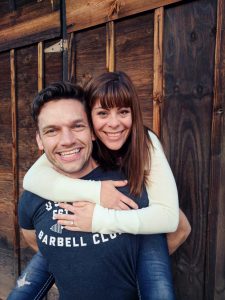
Jennifer and Spencer Stucki met and married within eight months. They said they both knew it was right.
“When I met him, he had big, giant arms and was going to the gym five or six times a week,” Jennifer said.
She said Spencer was the epitome of health. With a long history of diabetes in his family, “he wanted to take matters into his own hands and stay healthy,” she said.
“He’d been doing the Keto diet for almost 16 years, and he was just really health-conscious about what he ate and how he took care of his body,” she said.
They even started a family Keto-friendly ice cream business together.
But nine months into their marriage, the unimaginable happened.
“He got a cold that just wouldn’t go away, with a really bad fever and…and so that was kind of the first really outward sign that we had that something was wrong,” Jennifer said.
Spencer said he started losing energy.
“I’d go to the gym and I’d be able to do two-thirds of my workouts and then half and then a third,” he said.
Jennifer said one day her husband woke up with blood in his underwear and doctors noticed he was anemic. Spencer was eventually diagnosed with Stage 4 colon cancer.
“It was a complete shock,” Jennifer said. Spencer was only 36 years old.
By the time of the diagnosis, cancer had already spread to Spencer’s liver. “He had over 20 metastases,” Jennifer said.
Spencer has had more than 46 chemotherapy treatments in addition to specialized radiation treatments. Jennifer said the side effects of treatment have included neuropathy, sensitivity to cold, ulcers and a lot of pain.
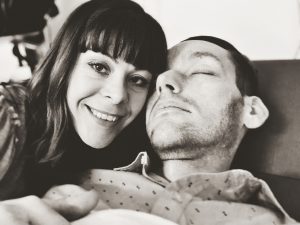
Even though Spencer Stucki’s mother died of colon cancer, he never thought he would get it, especially at such a young age.
Intermountain Healthcare’s Dr. Mark Lewis said more people are being diagnosed with colon cancer at a younger age, especially in Utah.
“Many of the families here in Utah can trace their ancestry to a small number of families. We call that founder effect,” Lewis said. “And in that small group of families, there may have been an enhanced risk genetically for these types of cancers and they’ve been passed down through the generations.”
Lewis said one out of every seven people in his practice affected by colorectal cancer is under the age of 50. He referenced a 2017 study that showed a 22% increase in colon cancer diagnoses and a 13% increase in the mortality rate in patients under the age of 50.
The American Cancer Society is now recommending people at average risk to get a colonoscopy at age 45 instead of 50. But Lewis said it’s different for those who have a family history of the disease.
Lewis urged people with a first-degree relative who has had colon cancer to start screening 10 years before the age of that individual’s diagnosis.
Spencer Stucki’s mother died of colon cancer, but he said he didn’t have a genetic marker for the disease.
“It’s a silent killer. You don’t know until it’s too late,” he said.
Often when Lewis talks with his patients, they are missing important details in their family health history. He said it’s important to know a relative’s exact diagnosis and age of diagnosis.
Lewis also encouraged people to not overlook symptoms.
“We look for, again, bleeding and anemia, abdominal pain, unintentional weight loss; all these things together really are concerning,” he said.
He said anemia is a big red flag because “no man should ever be low on iron for any reason.”
Lewis encouraged people to not shy away from talking about it with their doctor if they are having problems with their gut.
“It’s a private thing. It’s not a comfortable thing to talk about,” he said. “But it really is important for people to know the patterns of cancer in their own family.”
Lewis said it’s extremely common for someone to assume that a gastrointestinal issue is benign. He said those issues are often misdiagnosed as irritable bowel syndrome.
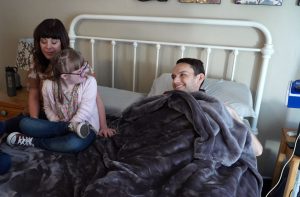
Spencer Stucki’s world has gotten a little smaller since he was diagnosed with colon cancer. He spends most of his time in bed.
While a colonoscopy does require some prep work and is more invasive than other routine screenings, Lewis said it a really powerful procedure because doctors can remove precancerous polyps before they become an issue.
Lewis said researchers aren’t quite sure why more people are being diagnosed at a younger age, but he said it likely includes a combination of genes, environment, lifestyle and luck.
Right now, the Stuckis are cherishing the time they have left with Spencer.
“He has done it with his head held high and with a smile on his face every single day,” Jennifer said.
Spencer said they’re relying on God.
“I couldn’t do this without him,” he said through tears.
Intermountain Healthcare has partnered with the Huntsman Cancer Institute on a program for adolescents and young adults who have been diagnosed with cancer.
“That’s the time in people’s lives when they’re starting families, they’re finishing school, they’re entering careers,” Lewis said. “It is enormously disruptive to have a cancer diagnosis at any age, but patients in that age range are particularly vulnerable.”
Lewis said the program offers additional support for all sorts of needs including financial, legal, employment and even fertility needs.
Idaho Family Saving Lives After Son’s Death From A ‘Silent Killer’
FRANKLIN, Idaho – Imagine walking around with a deadly genetic disorder and not knowing it. That may be the case for descendants of a Utah family.
In the quiet, picturesque town of Franklin, a family made a heartbreaking discovery.
Two days before Thanksgiving of last year, 7-year-old Baine Bobka got sick.
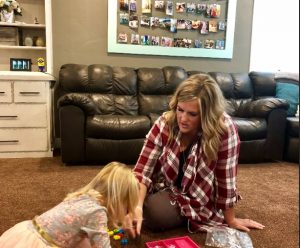
Kelsey Bobka of Franklin Idaho cherishes the wall of family photos behind her. Her son Baine died of a genetic disorder last Thanksgiving. Now she hopes to save lives.
“It was a Tuesday night in the middle of the night,” said Kelsey Bobka, Baine’s mother. “And we had all had the flu, and he had been with cousins and the youngest had had the flu when he was with them so it just wasn’t surprising when he came in and said, ‘Mom, I feel sick.'”
But the next morning, Baine’s symptoms were much worse.
“He was lying on the couch and he couldn’t even talk to me,” Bobka said.
In the emergency room, doctors did tests, and then flew Baine to Primary Children’s Hospital in Salt Lake City. That’s where they discovered his ammonia levels were dangerously high, damaging his brain.
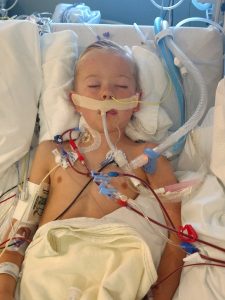
Baine Bobka, age 7, died of a genetic disorder no one knew he had. Now his family fights to save lives to honor him. (Photo Courtesy of Kelsey Bobka)
“I remember just sitting there thinking, ‘I know he won’t be the same, but I want him back,'” Bobka said.
Baine had a rare, genetic disorder called OTC deficiency, which causes too much ammonia to accumulate in the blood.
He did not survive.
Since Baine’s death, scientists have identified the genetic mutation for OTC. So far, about 35 family members have been tested. Of those, about half are positive.
Baine’s type of OTC deficiency goes undetected at birth, and lies latent until a trigger sets it off, like fasting or in Baine’s case, an illness.
“It is a silent killer,” said Dr. Nicola Longo, University of Utah Health.
Longo is following several branches of the family in Utah, and believes the genetic disorder is fairly prevalent here.
“These are very normal people who do just like all of us who do their own thing, and all of the sudden something tragic can happen within a family,” Longo said.
The disorder can be traced back to an immigrant family on the Mayflower who brought it to Utah.
“Jane Wright Earl. Yes,” said Sally Tarbet, Baine’s grandmother.
It’s linked to the X-chromosome. Girls are carriers, but boys can die from it.
The family has started an awareness campaign on social media: Baines Legacy on Facebook, Baines Legacy on Instagram and Cure UCD.
They also held a fundraiser to raise money for research.
“I feel like there’s a reason for everything, and as much as I hate it and don’t like it… and then I can’t imagine another family going through this, you know?” Bobka said.
All to save lives, and honor the boy they loved.
The warning signs of OTC deficiency include a family history of unexplained male deaths, and unexplained vomiting in children.
Cache Valley family has ties to every American war
RICHMOND, Utah – When Scott Tripp set out to find out just how many of his direct ancestors served in American wars, he found much more than some expected. He didn’t have to look far to start, already well aware of how his parents served: his mother as a nurse, and father a pilot in World War II. He learned the ties went back far beyond that.
“Basically, they felt it was their duty to go and serve,” Tripp said.
Scott’s cousin, Randy Tripp knows that sense of duty well. He served in the Army National Guard during in Iraq, and most recently served alongside his own son in Afghanistan.
“For some reason, it’s in the Tripp blood; to serve their country and fellow man,” Randy Tripp said.
Randy’s father also served in Vietnam and Korea. But Scott Tripp found connections dating back to the Civil War, the American Revolution, and even the French Indian War.
“If they could serve through the generations, they served,” Scott Tripp said. “In every war they could, they served.”
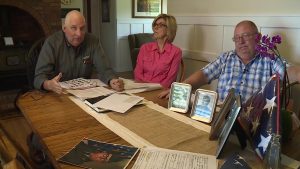
Scott Tripp(left), his wife, Judy Tripp(center), and cousin Randy Tripp(right) share pictures and documents detailing family members and ancestors that served in American wars.
Tripp took on the family history research after learning that he would have to fight cancer of the lymph nodes a second time. With an uncertain future, he also wanted to find a way to thank veterans and anyone who served their country around the Cache Valley. The family recently put an American flag on top of a 40 foot-long pole, that now rests on a hilltop on the family property, overlooking the northern part of Cache County.
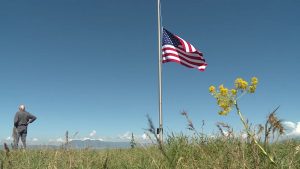
Scott Tripp looks over the valley, next to an American flag recently put in place by him and his family.
“Whether you serve in the military, or serve a mission, or serve your fellow man, it’s about service,” Tripp said. “And this is my way of honoring those who served.”
He’s also hopeful that in a time of divisiveness, more people can find common ground unite under the principles the United States was founded upon.
“The flag brings us together,” Scott Tripp said. “People forget that America is still a land of opportunity. It’s still a place that you can achieve whatever you dream.”
“The one thing we have in common is that flag that sits on top of that hill,” Randy Tripp added. “We have fought and died to preserve the right to fly that flag wherever we want.”
Family History 2.0: A New Generation of Genealogy
SALT LAKE CITY — Think genealogy is digging through musty libraries and church basements? Think again. Family history research has come a long way in the past few years.
Today, you’re just as likely to uncover hidden mysteries on your smartphone, or in your DNA results.
Popular television programs like “Relative Race” have helped intensify interest in family history research.
Host Michelle King explores how modern technology is making your family research fun, engaging and memorable.![]()
RootsTech features many DNA companies, helping people better understand their family history
SALT LAKE CITY — As thousands of visitors are in downtown Salt Lake City this week for the annual RootsTech convention, there is growing interest in the role that DNA is playing to better help people research their roots. And through a simple saliva sample, Lehi based Ancestry, can now connect you to 350 regions around the world.
“You are essentially a living walking record of the ancestors that came before you, we are taking that DNA and matching you to other people,” said Anna Swayne, a DNA spokesperson with Ancestry.
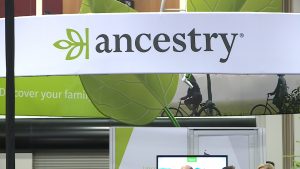
In one year, the Ancestry database has more than doubled from three million to now seven million individual profiles.
“Sometimes you are that person, you are the missing link for somebody else to find out, ‘wow, this really is my ancestry’ and you couldn’t do that unless you unlocked this technology of DNA testing, the science and technology coming together,” Swayne added.
Other DNA testing companies are marketing their products at RootsTech. Some offer even more specific data, through additional layers of DNA testing.
“What happened to a grandparent or great-grandparent versus what happened 500 years ago through a migration across the Atlantic or something like that,” said Robin Smith, with the California company, 23 and Me. “So there is a geographic element, but also a time element and that is something that our product really tries to get at.” 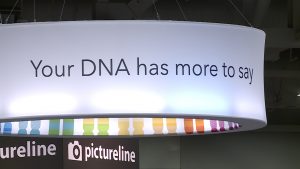
All agree that DNA testing is becoming a powerful solution to break through brick walls or bridge gaps, when historic records are unable to connect families.
“It is an ongoing experience and whether you tested yesterday or two years ago, as the database updates you’ll be able to find new connections and new cousins and unlock new discoveries,” said Swayne.
RootsTech continues Friday and Saturday, it is “Family Discovery Day,” a free event that will include an address from President Dallin H. Oaks of the Church of Jesus Christ of Latter-day Saints at 1 p.m.
Church Presiding Bishop Details How Tithing And Donations Are Used
SALT LAKE CITY, Utah – The Church of Jesus Christ of Latter-day Saints published three videos by church leaders and a summary Friday of the ways it uses tithing and donations, saying its approach was misrepresented in recent media stories about a former church employee who filed an IRS complaint about the church’s financial reserves.
Presiding Bishop Gérald Caussé, who helps manage the faith’s temporal affairs, offers a response in the videos to a report earlier this week that the church has a reserve fund of $100 billion.
“It’s about building a reserve of the church, and ultimately, all of those funds will be used for church purposes,” he said. He added that investing the reserves is intended to make sure their value increases to be used in the future for the same purposes.
The summary provided with the videos said that aid given to individual church members and families adds up to “billions more dollars in assistance.”
The summary did not provide a dollar figure for the annual expense. However, the church has not previously published any figure to describe the aid distributed within its 30,500 congregations. The volunteer bishops and branch presidents who lead the faith’s congregations use funds from the church’s welfare program to help men, women and children both inside the church and out with food, housing and other needs on a daily basis.
Church Responds To Allegations Made By Former Employee In IRS Complaint
The summary provided with the videos said the church directs tithing and donations to provide humanitarian aid in 197 countries, build and maintain temples that connect families, fund the construction and maintenance of meetinghouses and supports a global program of 399 missions and 65,000 missionaries, according to the summary.
The church also provides funds for the religious and university education of 793,000 students each year.
“The sacred funds donated by members of The Church of Jesus Christ of Latter-day Saints are an expression of faith, devotion and obedience to the biblical law of tithing and a desire to build Christ’s church through living the two great commandments to love God and neighbor,” the summary said.
Earlier this week, the Washington Post published a story about a former employee of Ensign Peak Advisors, an entity that invests the church’s tithing reserves. The income derived from those invested tithing funds is tax-exempt because Ensign Peak is what the IRS calls an integrated auxiliary and supporting organization of The Church of Jesus Christ of Latter-day Saints. Nonprofit groups, including religious organizations, are exempted from paying taxes on income in the United States.
The former employee, David A. Nielsen, alleged Ensign Peak should not be tax-exempt, because he claimed it has not met minimum IRS regulations for using a percentage of its funds annually for religious, educational or charitable purposes. His twin, Lars Nielsen, filed his IRS complaint in November. The action was done as a whistleblower complaint, which could entitle those submitting the complaint to receive a portion of any tax judgment against the church.
Lars Nielsen also posted documents online that he said his brother took or copied from Ensign Peak before he resigned in September.
The documents purported that Ensign Peak’s holdings have increased from $29 billion in 2008 to between $99 billion and $101 billion today. The vast majority of that increase is tax-exempt investment earnings.
The church denied any wrongdoing.
“The church complies with all applicable law governing our donations, investments, taxes and reserves,” it said in a statement on Tuesday.
An IRS employee in the agency’s media relations office declined to comment Friday, and directed the inquiry to a page on the IRS website.
“The IRS cannot advise you of any action it has taken or may take in response to a complaint,” the page said. “The confidentiality and disclosure provisions of the Internal Revenue Code preclude the Service from discussing matters relating to any activity it might undertake regarding the tax-exempt status of an entity with anyone other than the principal officers or authorized representatives of that entity. These provisions were enacted by Congress to protect the privacy of all taxpayers.”
The page said the IRS maintains an active examination program to ensure that tax-exempt organizations meet the requirements imposed by the Internal Revenue Code.
Independent tax experts have told multiple publications the IRS is unlikely to act on the complaint.
“There is not much of a case,” Peter J Reilly, a certified public accountant, wrote in Forbes. “The argument is that a private foundation is supposed to distribute 5% of its assets. Ensign (Peak) is not a private foundation. It is an integrated auxiliary of a church. And there is nothing in the tax law that prevents churches from accumulating wealth.”
Reilly quoted two other tax experts who said the allegations do not appear to violate tax laws and don’t warrant IRS attention. One said the IRS would not investigate the Nielsens’ claims that the Ensign Peak fund does not sufficiently support a religious purpose.
“The IRS does not attempt to question the beliefs or purposes of churches unless extreme,” said Paul Streckfus of the EO Tax Journal.
One of Bishop Caussé’s counselors, Bishop W. Christopher Waddell, said the reserve fund is diversified and follows the same principle the church teaches its members.
“They should live within their means and little by little they should have a financial store of savings, reserves for a rainy day,” he said. “That’s exactly what the church does.
“The church has a budget, again from the faithful tithes and offerings of members of the church, and every year is budgeted portion to set aside for that rainy day that grows to be used so that, if hard times economically do come again, and they will — over time we know there are cycles — that we will have the resources necessary to continue doing this divine work. We won’t have to stop missionary work. We won’t have to stop temple work. We won’t have to stop doing the things we have been commissioned to do because of a lack of resources. That’s why we care for them so carefully.”
Some church members have said they are glad to see the church is financially sound and prepared for the future.
“I just noted that my church has $100 billion safety fund,” Sen. Mitt Romney, R-Utah, told a reporter. “I’m happy that they’ve not only saved for a rainy day, but for a rainy decade.”
The third member of the Presiding Bishopric, Bishop Dean M. Davies, said church leaders are grateful for the tithes and donations made by members.
“We’re so careful, so very, very careful to make certain that those funds are expended in a way that they would feel good about,” he said.
Others have questioned the fund’s size and purpose.
For example, the Nielsens and others have noted that Ensign Peak’s holdings are more than double the size of the $41 billion endowment fund at Harvard University, the nation’s largest. Harvard provides financial aid to 70 percent of its nearly 20,000 students.
The summary the church released Friday showed it has nearly five times more students in its colleges and universities and 40 times more students overall.
The church heavily subsidizes the tuition and costs of 100% of the combined 93,000 students at the faith’s five colleges and universities.
Its Seminary and Institutes program provides free, daily religious instruction to about 400,000 high school and 300,000 university students annually.
Friday’s summary included other details, many of which have been reported before.
- Latter-day Saint Charities has provided $2.2 billion in aid in 197 countries since 1985, as reported earlier this week by the Deseret News.
- Tithing funds are used to operate the church’s 166 operating temples. Another 15 temples are under construction, and plans have been announced to build an additional 36 for a total of 217. The genealogical work that surrounds each temple is supported by FamilySearch, the faith’s nonprofit organization that offers free genealogical resources to all.
- Its meetinghouses provide not only space for Sunday worship services and activities during the week, they host community education courses and family history research and support emergency response activities when necessary.
- While the church’s 65,000 missionaries or their families or sponsors each provide $500 a month to support their missionary service, tithing and donations fund the mission homes and offices, missionary apartments, automobiles, travel and more.
Special KSL general conference programming to feature patriotism, service and exclusive interview with new LDS prophet
SALT LAKE CITY — This weekend, KSL-TV will suspend its regular daytime programming and, along with airing LDS general conference, will air several inspiring, locally-produced documentaries addressing a wide range of topics.
All of the specials will be available on KSL-TV, KSL.com and on demand on the KSL TV app. Be sure to tune in to watch each of these specials.
Here is a schedule for these programs:
Saturday, March 31
9:30 a.m. – 10:00 a.m.: History of the Saints
Holy Ground, Sites Sacred to the Restoration: Palmyra
Each year, thousands of Latter-day Saints journey to the sacred sites of the Restoration to experience more fully what happened and where. It was at these sites where the LDS faithful believe God restored necessary truths and ordinances. Many come away understanding that these places have a sacred spirit about them that strengthens spiritual knowledge and faith. This special presentation is the first in a series that will take viewers all over the world to stand virtually on holy ground. This first episode journeys to Palmyra and Manchester, the very cradle of the Latter-day Saint Restoration. The stories, the events and the scenery that make this ground holy will be presented in vivid detail.
10:00 a.m. – 12:00 p.m.: General Conference
12:00 p.m. – 1:00 p.m.: Aid Amidst the Storm
Florida, Texas, Mexico, Puerto Rico, California — the list of areas affected by disaster in the last few months is overwhelming. Each place was impacted in different ways, but one thing they all had in common were the Mormons there among those who were offering aid. Whether in a sea of yellow Helping Hands vests or just neighbor to neighbor, members of The Church of Jesus Christ of Latter-day Saints were a force for good as they joined many others who were volunteering and providing support. See the heartwarming connections these volunteers made as they answered the call to serve amidst the storm.
1:00 p.m. – 1:30 p.m.: In God We Trust
Kyle Fox is defined by his patriotism, service and love of God. He’s an everyday citizen who, during a time when divisions are strong and many have lost hope, felt compelled to create a project that unites people around a common symbol of freedom. He set to work creating the largest free-flying American flag in The United States and then flew it across a 1,100-foot canyon near his home. His desire was to inspire greater patriotism in others and to strengthen the love of country within his community. His “Follow the Flag” project has become more than he could have imagined, has impacted thousands and has helped military families heal. Fox believes we all have a responsibility to be courageous, to speak out and to have hope. We’ll share the faces, places and inspiring stories surrounding this project.
1:30 p.m. – 2:00 p.m.: An Artistic Vision
Artists, scholars, musicians and interested observers will come together for the first-ever Mormon Arts Center festival in New York City in June. This gathering is dedicated to elevating the concept of why Mormon art matters. KSL arts and religion specialist Carole Mikita shares the humble beginning of this movement and how the festival came to be. Visit the studios and art spaces of both new and known Mormon artists, and hear the music created by some very talented Mormon composers.
2:00 p.m. – 4:00 p.m.: General Conference
4:00 p.m. – 5:00 p.m.: LDS News and World Report
__________________________________________________________
Sunday, April 1
9:00 a.m. – 9:30 a.m.: 50 Years of Miracles
Once a year the quiet community of Manti, Utah, is transformed into a hub of activity as thousands of people from around the world flock there to experience the Mormon Miracle Pageant. What began as a one-time performance at the foot of the Manti Temple has transpired into a half century of tradition. Join KSL news specialist Sam Penrod as he explores “50 Years of Miracles,” the story of the Mormon Miracle Pageant in Manti.
9:30 a.m. – 10:00 a.m.: Music and the Spoken Word
10:00 a.m. – 12:00 p.m.: General Conference
12:00-1:00 pm President Russell M. Nelson: Brilliant Mind, Gentle Heart
For decades, he served as an apostle and now, Russell M. Nelson has become the 17th prophet and president of The Church of Jesus Christ of Latter-day Saints. He came to church leadership from a career as a world-renowned heart surgeon. In an exclusive interview with him, we discover the many gifts and talents of a man with a brilliant mind and gentle heart.
His colleagues, friends and family members also offer insights and share stories of his faith as he traveled the world, and of his devotion as a husband, father, grandfather and great-grandfather. Those who know him best say President Nelson’s intense belief in the restored gospel of Jesus Christ makes him a leader for this time.
1:00 p.m. – 1:30 p.m. Voices of Strength
Whether it’s in business, education, community service or sports, you’ll find people who inspire others. In “Voices of Strength,” we profile these five women who have used their experiences and voices to help others. We share their stories and personal insights about faith, hard work and grief.
- Gail Miller: For a long-time, Gail Miller was known only as the wife of businessman Larry H. Miller. Today, she is known for her philanthropic work and service in the community. Her life may seem charmed, but Gail Miller has experienced challenges in nearly every aspect of her life: financial struggles, family trials and personal loss. Through it all, she had the courage to move forward and remain grounded in her faith. Gail Miller has recently released a book called “Courage to be You.” In it, she provides inspiring lessons from her unexpected journey.
- Sahar Qumsiyeh is a Palestinian convert to The Church of Jesus Christ of Latter-day Saints. She joined the LDS Church when she came to BYU to study math, and then returned to Palestine. She was a Relief Society president in Israel, who many times couldn’t get through the security checkpoints in Jerusalem to get to church. Her story is one of forgiveness and the healing power of the Savior. She has written a book called “Peace for a Palestinian,” where she shares her story of faith amid war in the Holy Land.
- Carol Decker: While she was pregnant, Carol suffered an infection which nearly took her life. The infection caused her to go blind, and she had to have both her legs and parts of her arms amputated. Since then, Decker has become an advocate for adaptive living, and is a motivational speaker. She epitomizes strength, perseverance, optimism and faith.
- Lisa Valentine Clark: You’ve probably seen her in any number of commercials or independent features. Clark is an actress, comedian, writer and producer. But she says her greatest roles are mother and wife. Clark and her husband are the parents of five children. During the last few years, as her career has taken off, struggles at home have become more challenging. Life and death have taken on new meaning for Clark who helps her husband progress through the life-altering stages of Lou Gehrig’s disease. She says, “When we don’t know where to begin, we begin with hope.”
- Justice Christine M. Durham: Durham knows what it feels like to blaze trails for others. For years, she was told that her dream to practice law was implausible because she was a woman. When Durham graduated from Duke Law School, fewer than 2 percent of the people practicing law were female, but this didn’t discourage her. Durham worked hard and eventually served as Utah’s first female district court judge and Utah Supreme Court justice. She is the only woman in the state to have been elected Chief Justice by her fellow justices. Durham credits her colleagues, family and faith for her success. At one point in her career, Durham was the highest ranking LDS Church member serving in the United States judiciary system.
1:30 p.m. – 2:00 p.m.: Miracles from Elsie
Three-year-old Elsie Mahe’s life was cut short after a tragic accident in the family home, but her legacy lives on. The Mahe family says while they didn’t receive their miracle for Elsie, there were many miracles from Elsie. Elsie’s organs were donated to save many lives, but the miracles go far beyond this. See how the sparkle and spirit of a little girl have helped to spread faith, love and kindness across the globe.
2:00 p.m. – 4:00 p.m.: General Conference
4:00 p.m. – 4:30 p.m.: The Rising Generation
Most performers are lucky to achieve fame after years spent in the trenches. But what do you say about a singing five-year-old who’s already been seen by millions on YouTube and network television? In “The Rising Generation,” you’ll meet a variety of young people who’ve already hit it big. From little Claire Crosby singing with her dad, Dave, to Lexi Walker, who’s recording and performing all around the globe, and Madilyn Paige, who made a splash on NBC’s “The Voice.” Then there are the family acts, like Jenny Oaks Baker & Family Four, who haul their instruments around the world to play. And sibling actors Mia, Anson and Ari Bagley thrill audiences onstage and on their hit family YouTube channel “Working With Lemons.”
You’ll find out how these local young LDS performers hold on to their values in a tough industry, stay driven yet well-rounded and how they’ve managed to see their hopes and dreams realized long before they thought possible.
4:30 p.m. – 5:00 p.m.: Family History 2.0
Think genealogy is digging through musty libraries and church basements? Think again. Family history research has come a long way in the past few years. Today you’re just as likely to uncover hidden mysteries on your smartphone or in your DNA results. Popular television programs like “Relative Race” have helped intensify interest in family history research. Program host Michelle King explores how modern technology is making your family research fun, engaging and memorable.
KSL has new and exciting ways to watch General Conference this year. In addition to KSL-TV 5’s broadcast coverage, General Conference will also be streamed live in the KSL-TV mobile and Connected TV apps (iOS, Android, Fire TV, Roku and Apple TV). No cable subscription required. And don’t worry if you miss anything or want to watch again later. All sessions and KSL Conference documentaries will also be available in the app on-demand.
Conference Sponsors
A lot of work and production goes into our Conference documentaries and coverage. Thank you to all of our sponsors: The Piano Guys, EDGEhomes, Deseret First Credit Union, Siegfried & Jensen and Living Scriptures.


General Conference Documentary Schedule
Here is KSL-TV’s programming documentary schedule for General Conference October 2017:
Saturday, September 30, 2017
- History of the Saints: 9:30-10:00 am
Joseph Smith is the Prophet of the Restoration and as such occupies a unique and singular place in Latter-day Saint history. Because of who he is and what he represents he frequently comes under attack by critics. This History of the Saints special brings together respected scholars to answer questions and address concerns about Joseph Smith the Prophet. - 50 Years of Miracles: 12:00-12:30 pm
Once a year the quiet community of Manti Utah is transformed into a hub of activity as thousands of people from around the world flock there to experience the Mormon Miracle Pageant. What began as a one-time performance, at the foot of the Manti Temple, has transpired into a half a century of tradition. Join KSL News Specialist Sam Penrod as he explores “50 Years of Miracles” the story of the Mormon Miracle Pageant in Manti. - LDS News and World Report: 12:30-1:30 pm
This one-hour semi-annual report explores some of the major news events around the world pertaining to The Church of Jesus Christ of Latter-day Saints. - Choosing Happy: 1:30-2:00 pm
Who doesn’t want to be happy? It’s one of the basic rights Americans were guaranteed when this country was founded — “life, liberty, and the pursuit of happiness.” But how much of your happiness is due to your circumstances? What portion is genetically determined? Who are the happiest people in the world? And, if you’re not happy—why not? Host, Michelle King talks to three experts who lay out some key strategies for finding happiness. You’ll meet several strong everyday people who’ve used those techniques to get through severe setbacks and sorrow. From dealing with the typical adversities life throws at you, to combating unexpected tragedies, addiction, and depression, you’ll be better prepared, once you’re armed with new tools and actually make the choice to be happy. - To The Rescue: 4:00-5:00 pm
Members of the LDS Church have been counseled to reach out and help refugees. KSL News Specialist Deanie Wimmer shows how this call to service has inspired many people to step outside their comfort zones to help those most in need. A young woman, drawn to help in whatever way she could set up a successful nonprofit organization that now provides thousands of pounds of needed items to those fleeing their dangerous homelands. Some members have traveled to refugee camps to show compassionate care, while others serve closer to home helping in their own communities. It’s a movement that is gaining momentum — it’s a desire to help those who cannot help themselves.
Sunday, October 1, 2017
- Connecting Roots: Freedmen’s Records: 9:00-9:30 am
The Freedmen’s Bureau Project has changed the very fabric of genealogy for African Americans. “Connecting Roots” explains the history behind this project and the personal stories about why this is so meaningful for so many families. - Family History 2.0: A New Generation of Genealogy: 12:00-12:30 pm
Think genealogy is digging through musty libraries and church basements? Think again. Family History research has come a long way in the past few years. Today, you’re just as likely to uncover hidden mysteries on your smartphone, or in your DNA results. Popular television programs like Relative Race have helped intensify interest in family history research. Program host, Michelle King explores how modern technology is making your family research fun, engaging and memorable. - An Artistic Vision: 12:30-1:00 pm
Artists, scholars, musicians and interested observers come together for the first-ever Mormon Arts Center festival in New York City. This gathering is dedicated to elevating the concept of why Mormon Art matters. KSL Arts and Religion Specialist Carole Mikita shares the humble beginning of this movement and how the festival came to be. Visit the studios and art spaces of both new and known Mormon Artists and hear the music created by some very talented Mormon Composers. - Members in Many Lands: 1:00-1:30 pm
Travel to far off places with News Specialist Ashley Kewish to see what life is like for Mormons around the world in India, Mali, Mexico, Jamaica, Austria, Brazil, and Ghana. Many of these members of The Church of Jesus Christ of Latter-day Saints are recent converts who have adopted a new lifestyle as they embrace the teachings of the Gospel of Jesus Christ. - Civility: Changing the Conversations: 1:30-2:00 pm
Civility has taken a hit lately. The art of disagreeing gracefully has been replaced with vitriol comments and caustic feelings. It seems no matter the topic, discussions in online comment boards, on social media sites, and in public gatherings have become increasingly more hostile. These disagreements affect our families, our schools, and our workplaces. Despite this trend towards negativity, there are voices working to change the communication—to make it more civil. We highlight these positive voices.
Man arrested in decades-old rapes after DNA from coffee cup linked him to the crimes
(CNN) — A Michigan man is facing felony charges after DNA from a coffee cup linked him to two rapes in different states from more than 20 years ago, a prosecutor said.
Alan Kurt Rillema, 51, was arrested last week and arraigned in Michigan on charges of first- and second-degree criminal sexual conduct. He also faces felony charges in Pennsylvania, according to court documents.
The charges are the latest stemming from advances in investigative genetic genealogy leading authorities to a suspect in a decades-old cold case.
The first rape Rillema is accused of was reported at a golf course in Michigan in 1999. Someone came in through an employee-only door and sexually assaulted a young woman who was working at the course’s food stand, said Oakland County Sheriff Michael Bouchard at a news conference last week.
Investigators at the time obtained DNA but didn’t have a suspect, the sheriff said.
Then, another rape was reported in 2000 at a golf course at Penn State University, where a woman was attacked while she was jogging and raped at knife point, court documents say.
Investigators in both states, who had submitted DNA samples to a national database, got a match linking the attacks to the same suspect, Bouchard said.
“Now you’ve got people that are victims in different parts of the country with the same kind of M.O., both on a golf course,” the sheriff said.
It wasn’t until years later — thanks to advances in genetic genealogy — that investigators got a lead.
Investigators in both states solicited the help of DNA technology company Parabon NanoLabs, which can use genetic genealogy and other research methods to find suspects using DNA by searching for relatives in public databases and building family trees.
The lab concluded it was likely one of three brothers who were responsible for both rapes, according to Centre County First Assistant District Attorney Sean McGraw.
Authorities were able to narrow the list to Rillema after Michigan police obtained a DNA sample by following him and taking his DNA from a Styrofoam coffee cup, according to McGraw.
“That was sent off to the lab and the DNA taken from the coffee cup matched the DNA of the perpetrator of the 1999 and 2000 rapes,” McGraw told CNN.
Rillema was ordered to be held in a county jail in Michigan without bond until a probable cause conference on Thursday, the Oakland County Sheriff’s Office said.
If convicted of first-degree criminal sexual conduct in Michigan, he could face up to life in prison, the sheriff’s office said.
In Pennsylvania, he faces charges of rape by forcible compulsion, sexual assault, aggravated indecent assault, indecent assault, unlawful restraint, simple assault and recklessly endangering another person, McGraw said.
Rillema has been arraigned and pleaded not guilty, his attorney, Deanna Kelley, said in a statement to CNN. “Regarding the allegations: There are two sides to every story and Mr. Rillema looks forward to telling his,” Kelley said.
Rillema’s next court appearance in Michigan is Thursday. Pennsylvania and Michigan authorities are in the process of discussing the timing of the respective trials, according to McGraw.
Bouchard described Rillema as “an avid golfer” who apparently played all over the U.S. The sheriff asked anyone who was victim of a similar crime at a golf course to call their local police department.
The arrest was made possible by advances in technology, Bouchard said.
“A lot has changed since 1999,” the sheriff said. “Investigators worked side by side … and found a person that clearly wasn’t on our radar for any reason, has no criminal history, but now has been positively identified in two very violent sexual encounters.”
It isn’t the first time DNA from a coffee cup led investigators to a cold case suspect in Pennsylvania: A man was charged last year with the stabbing death of a 19-year-old woman from 1975 after investigators got his DNA from a cup he used and threw into a trash can at an airport, authorities said.
The-CNN-Wire™ & © 2023 Cable News Network, Inc., a Warner Bros. Discovery Company. All rights reserved.

